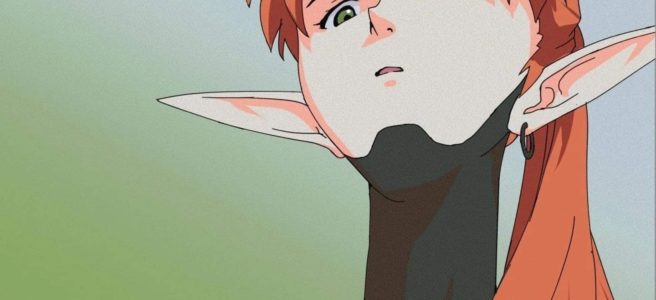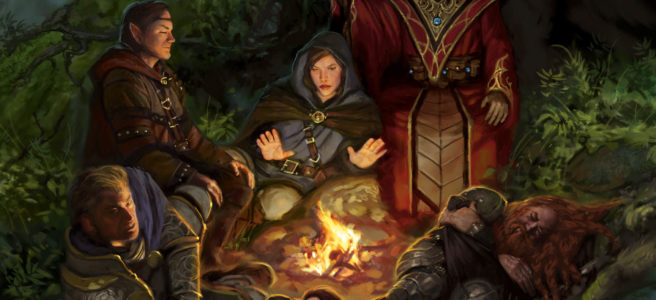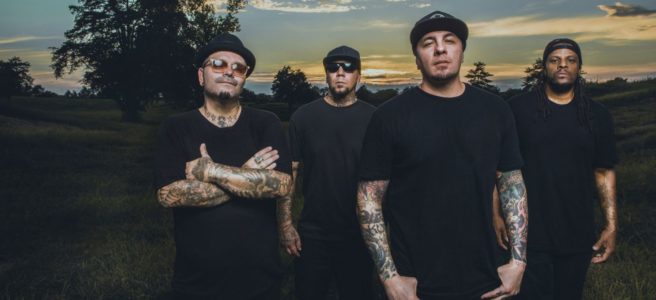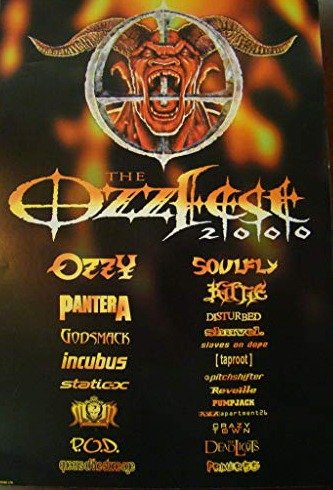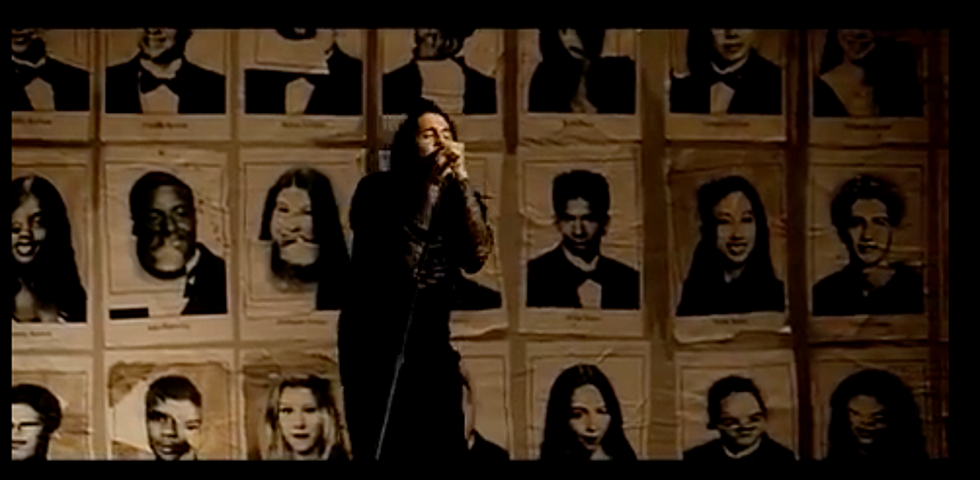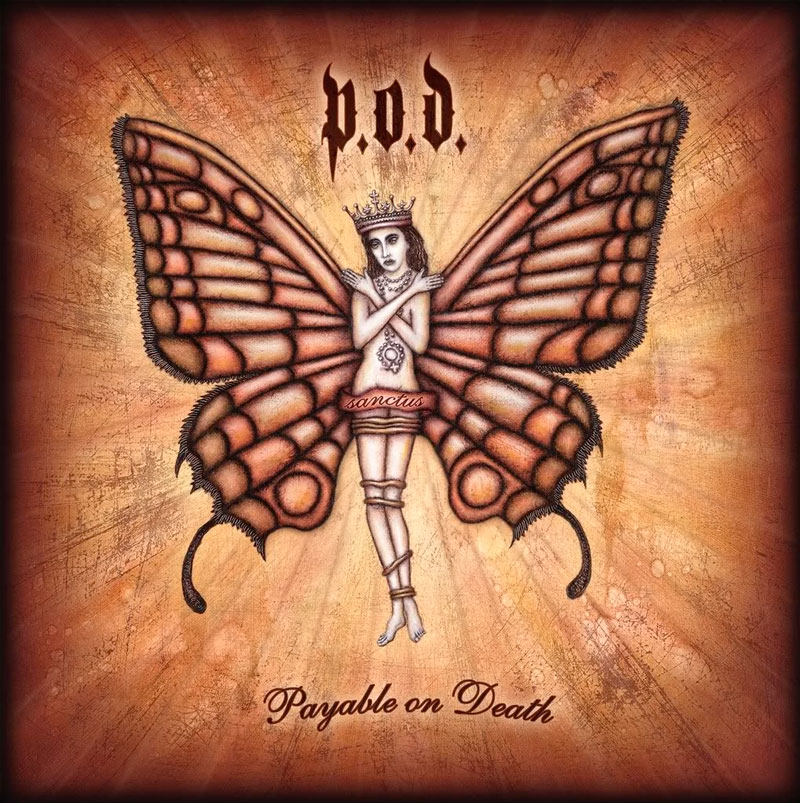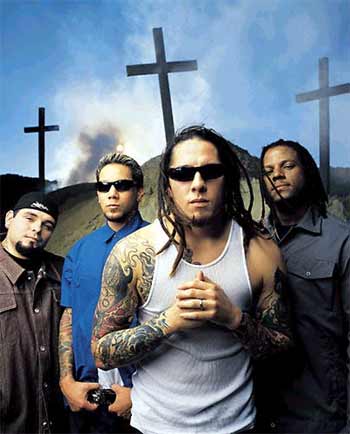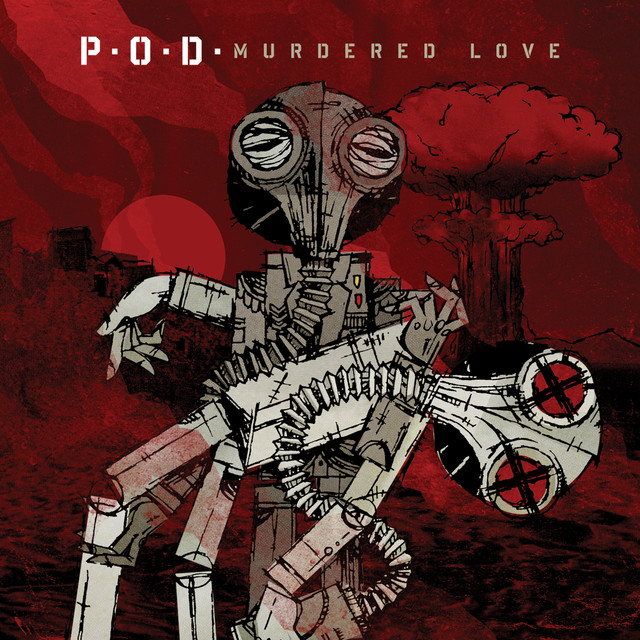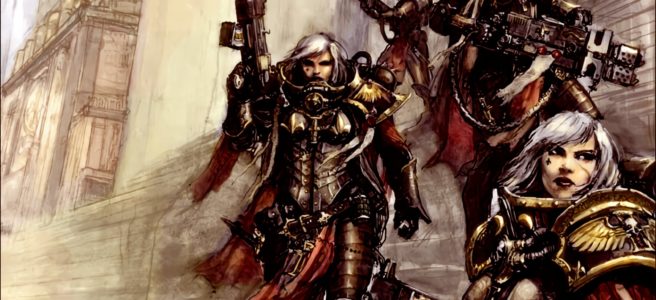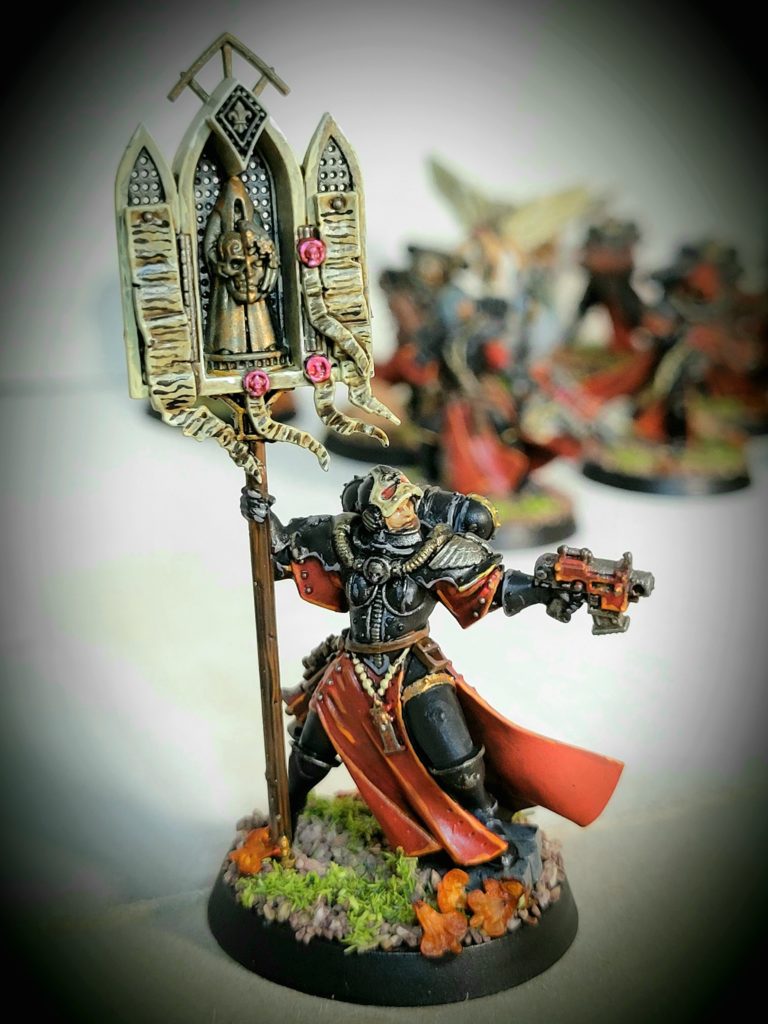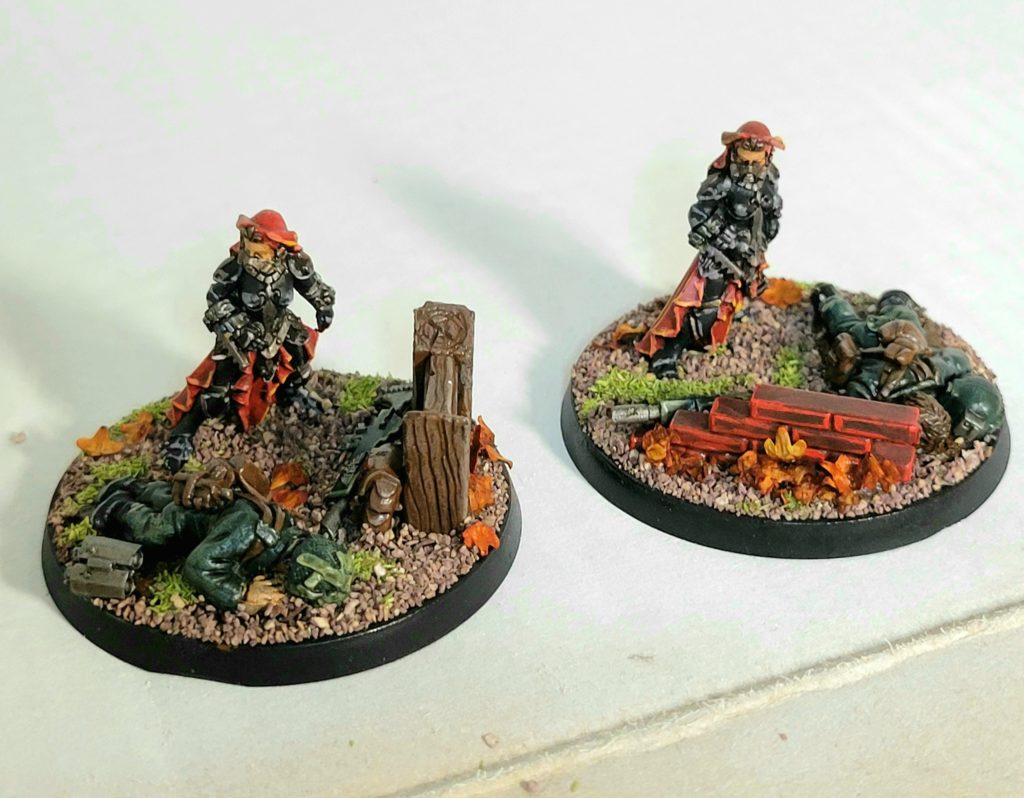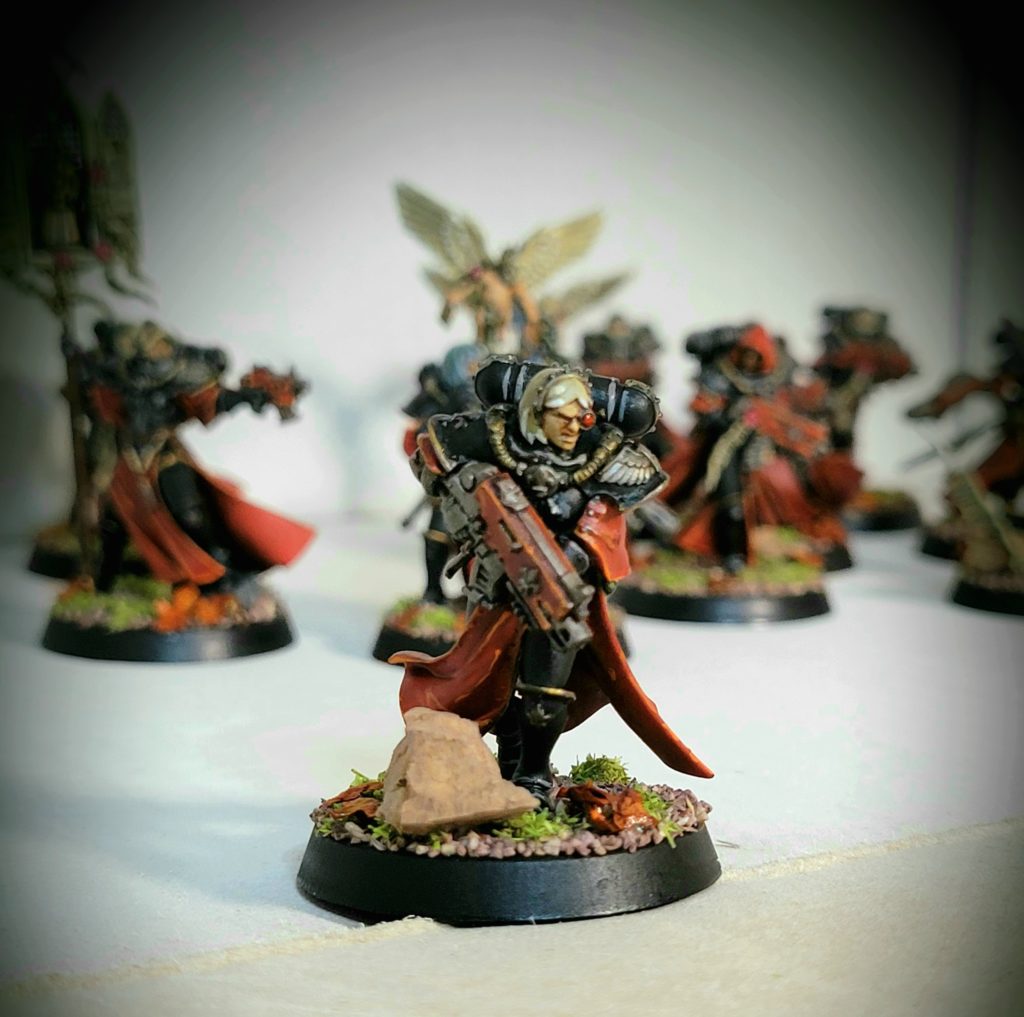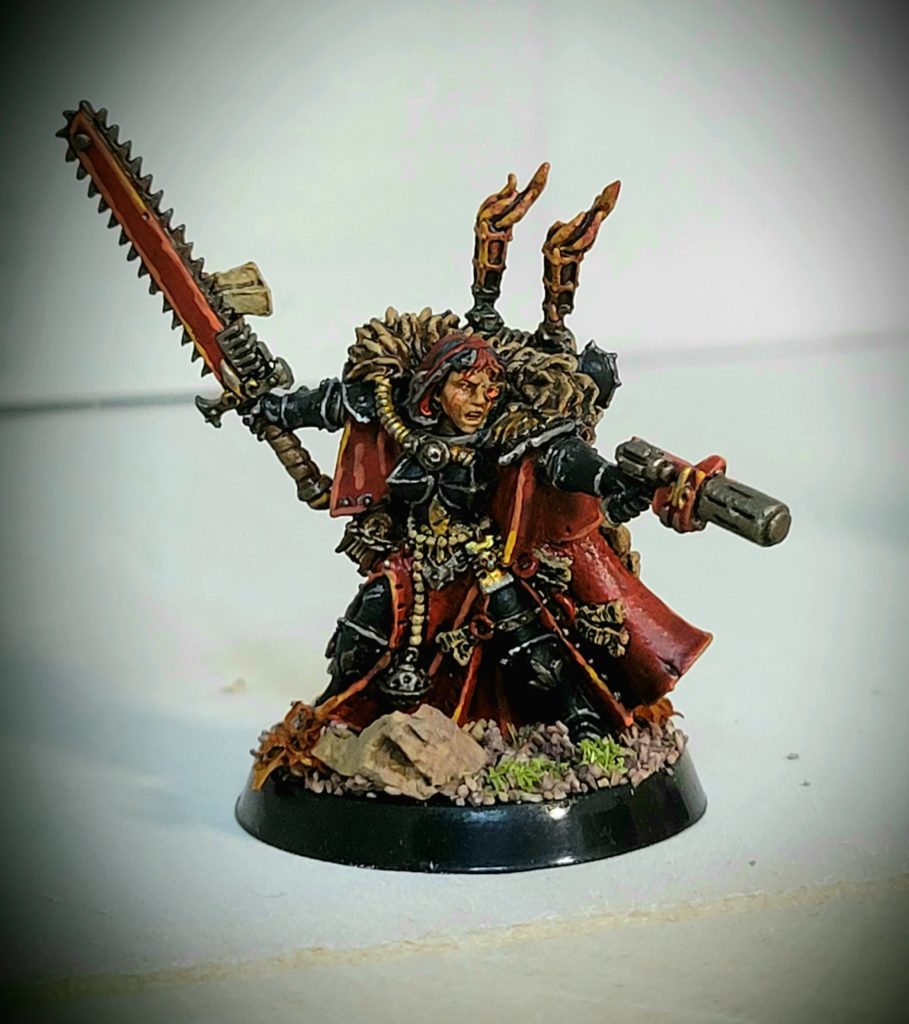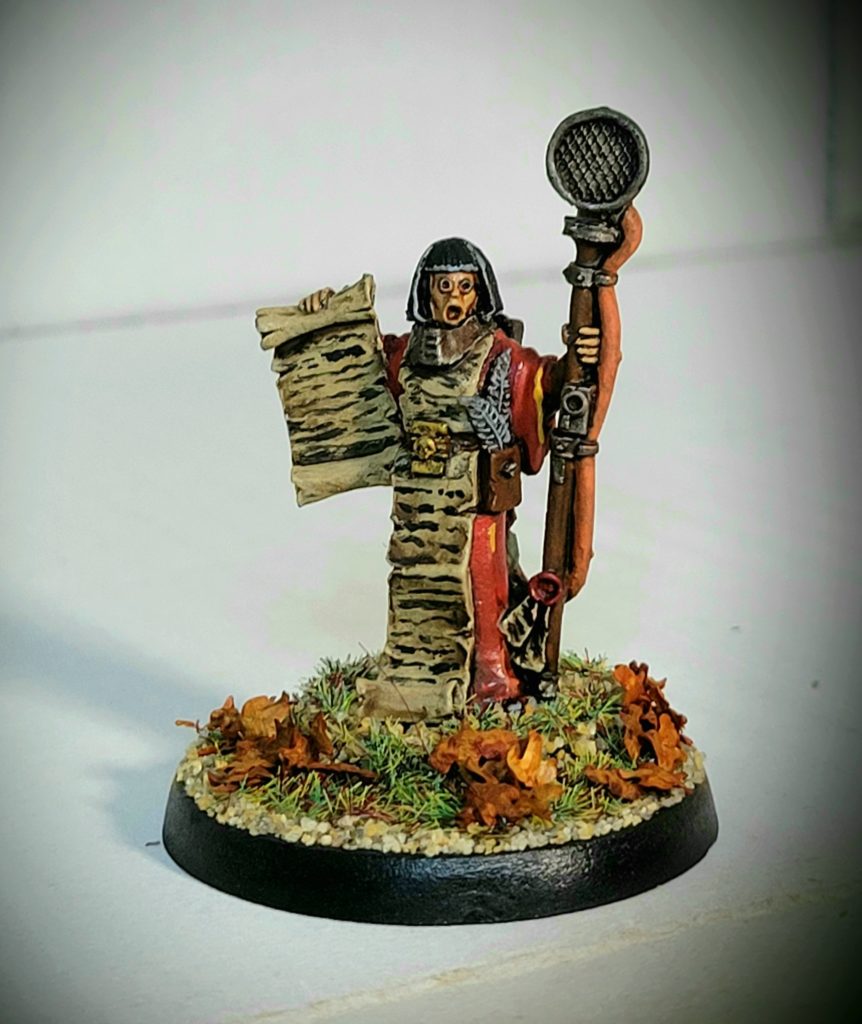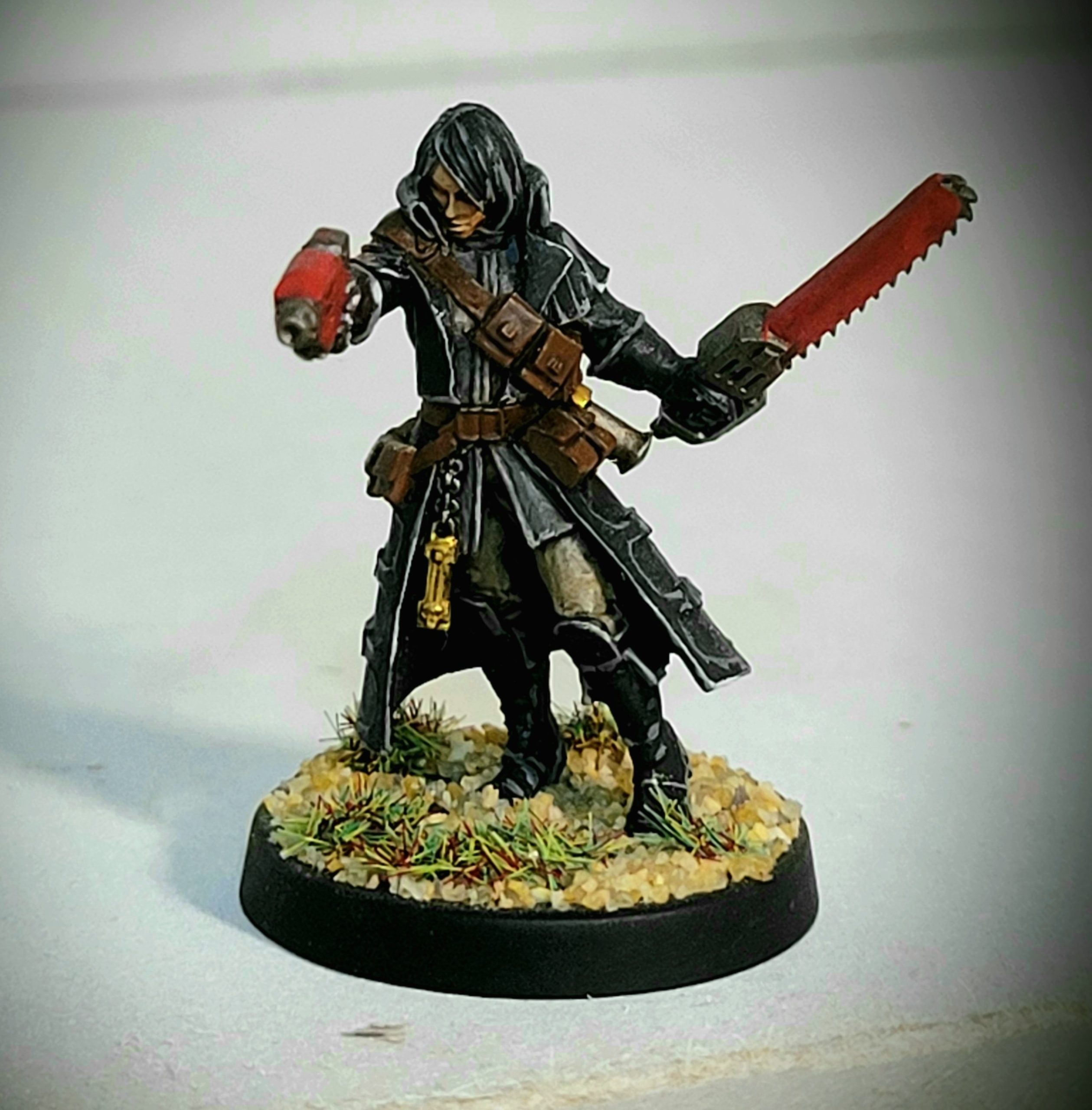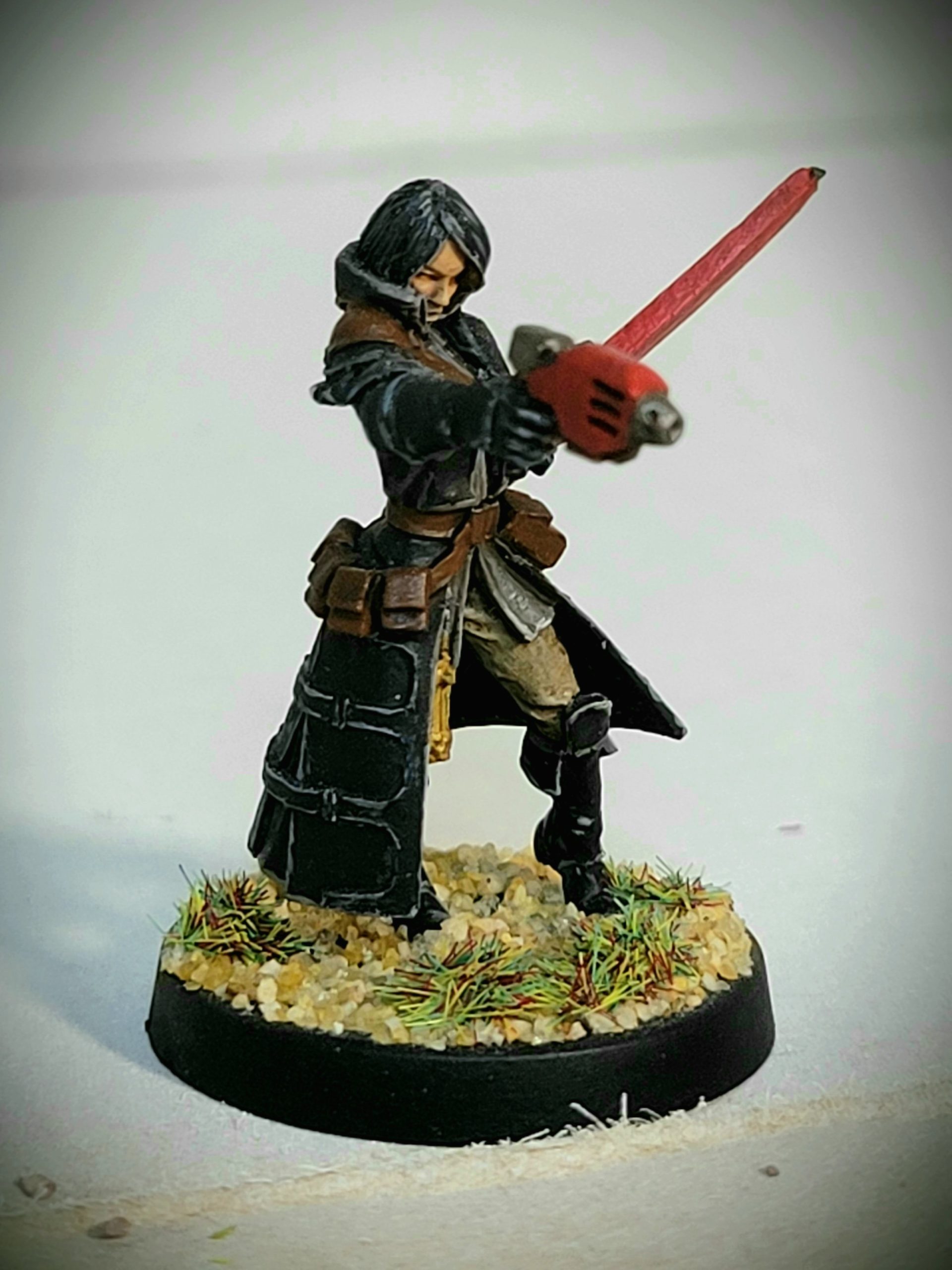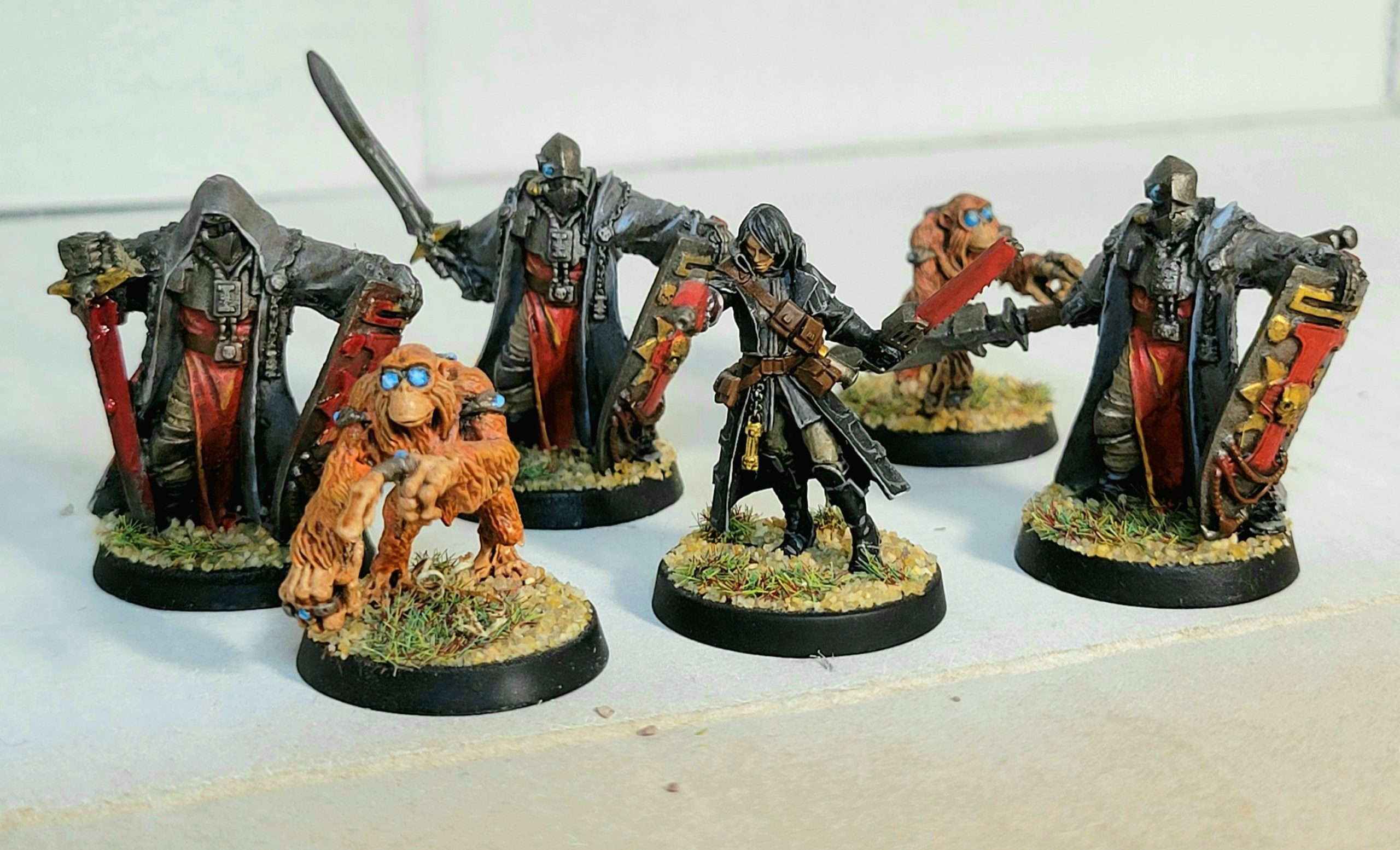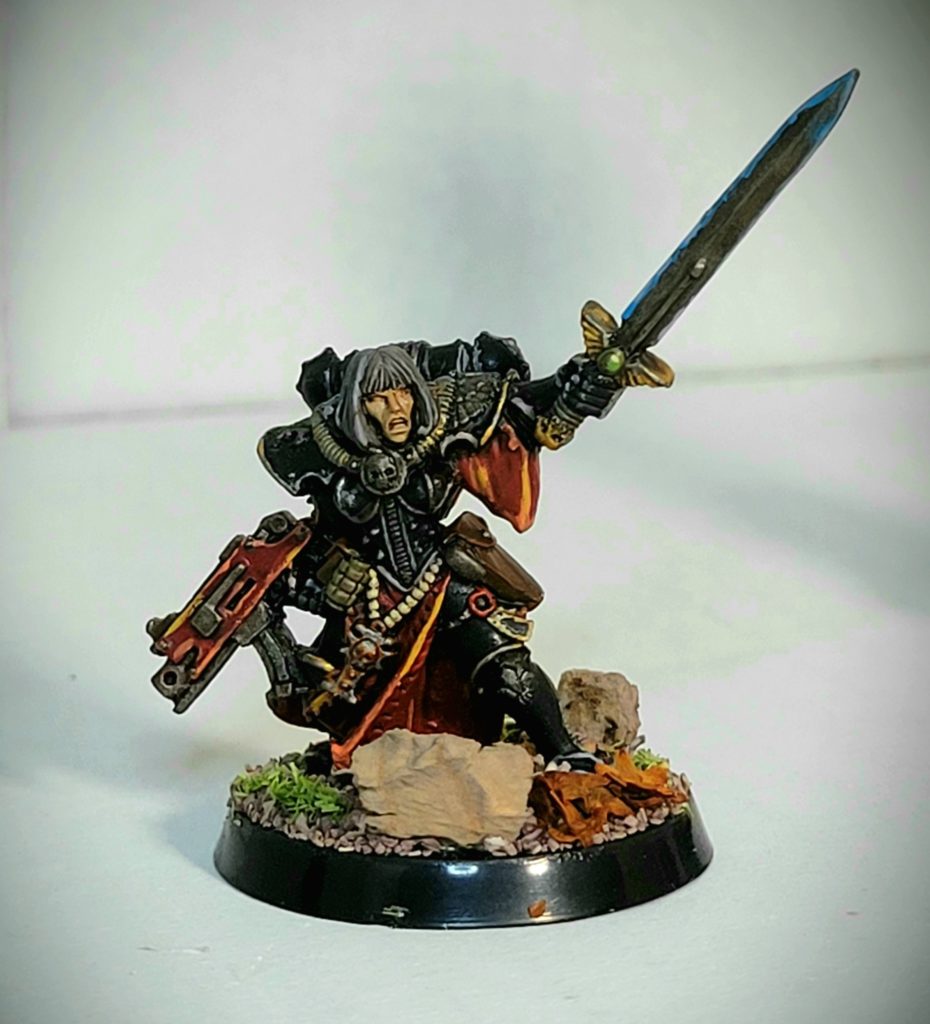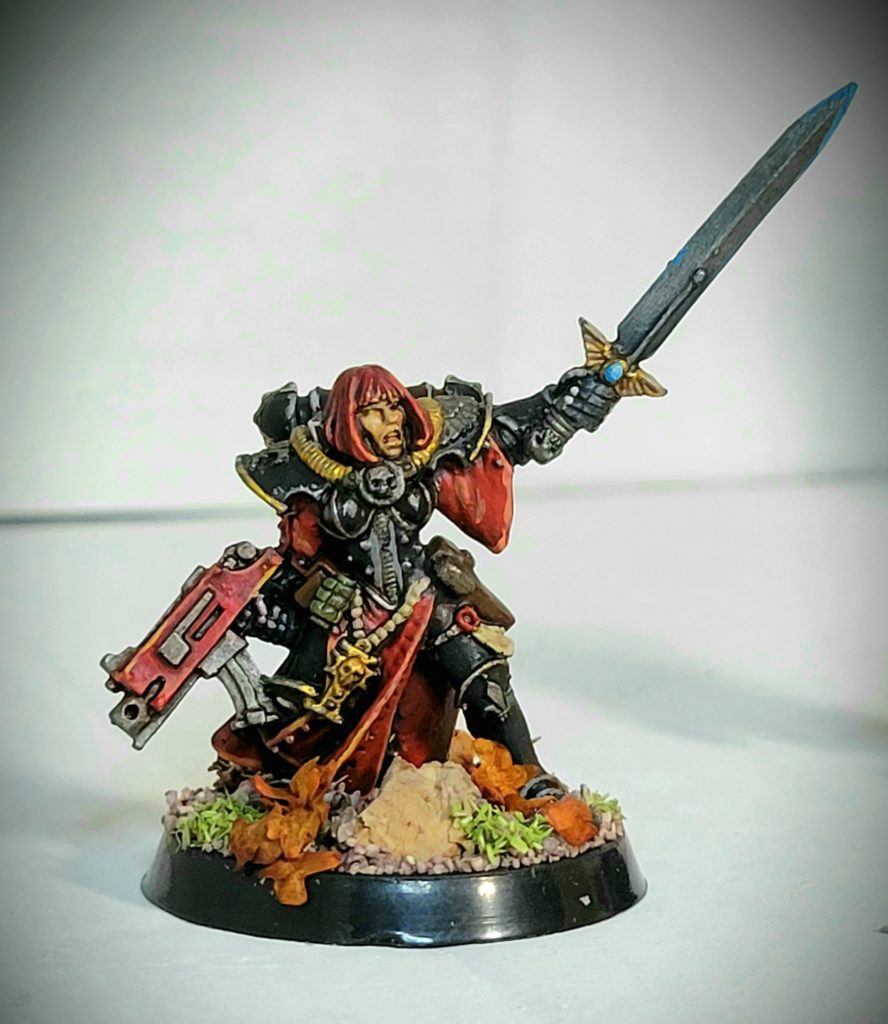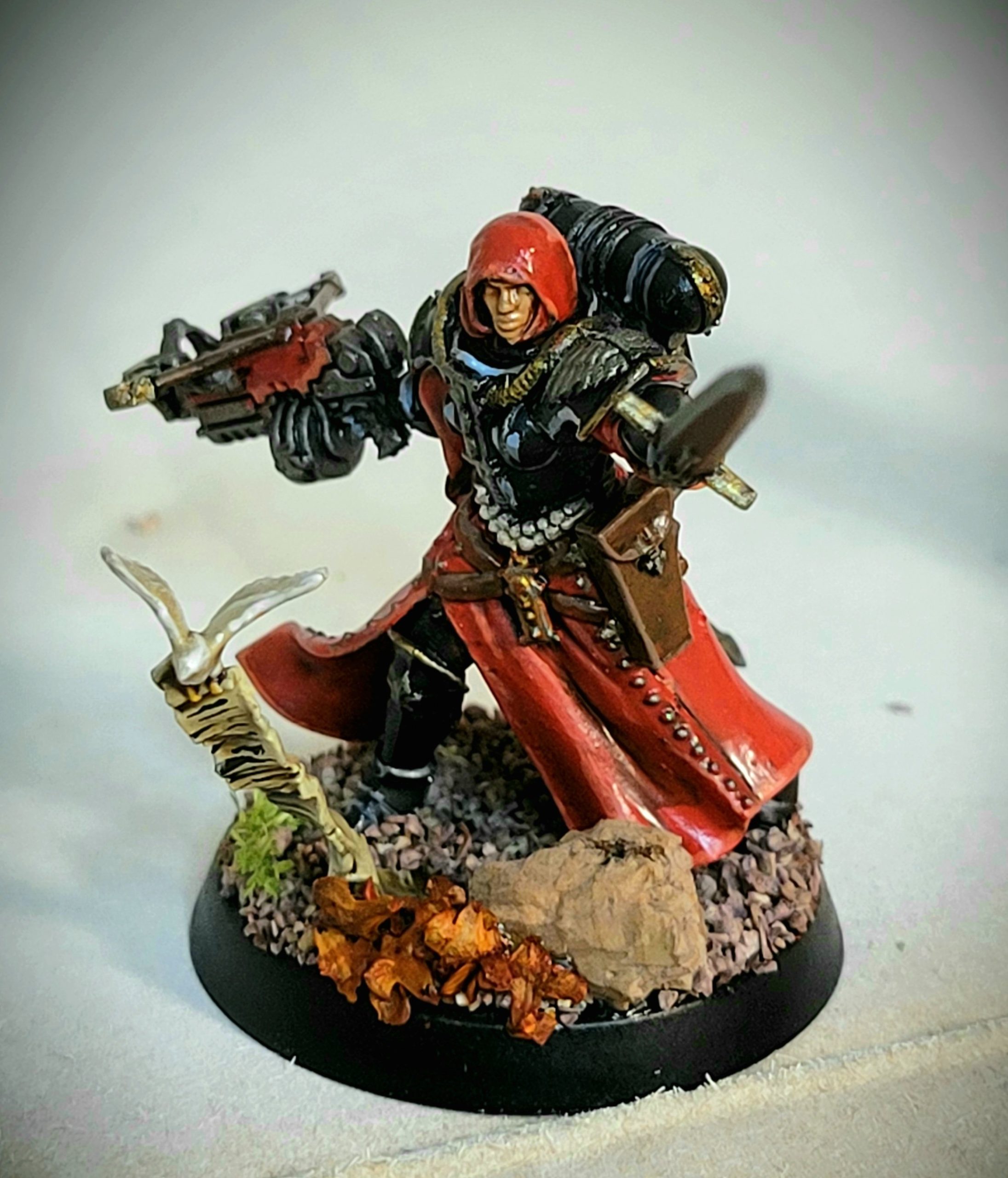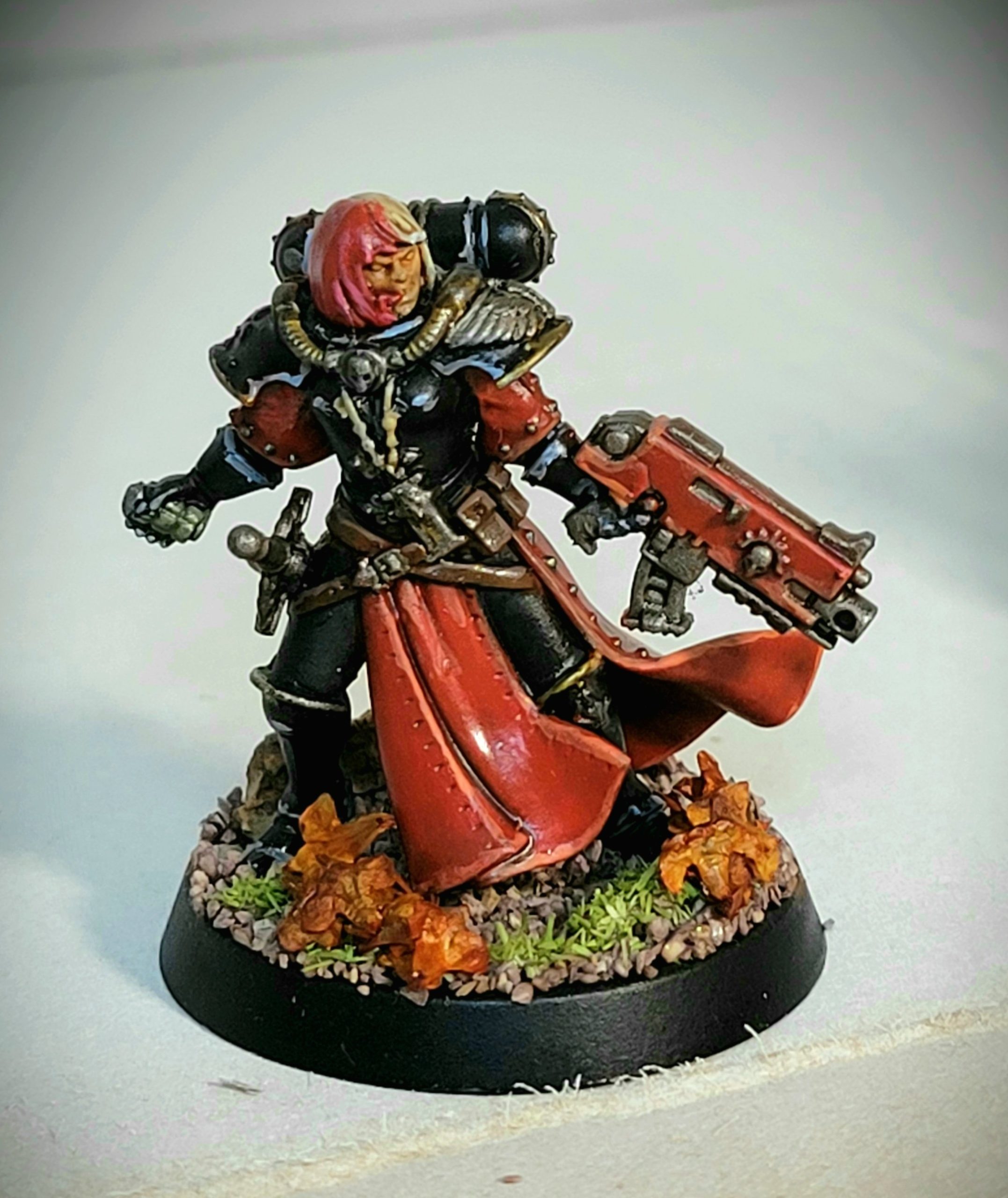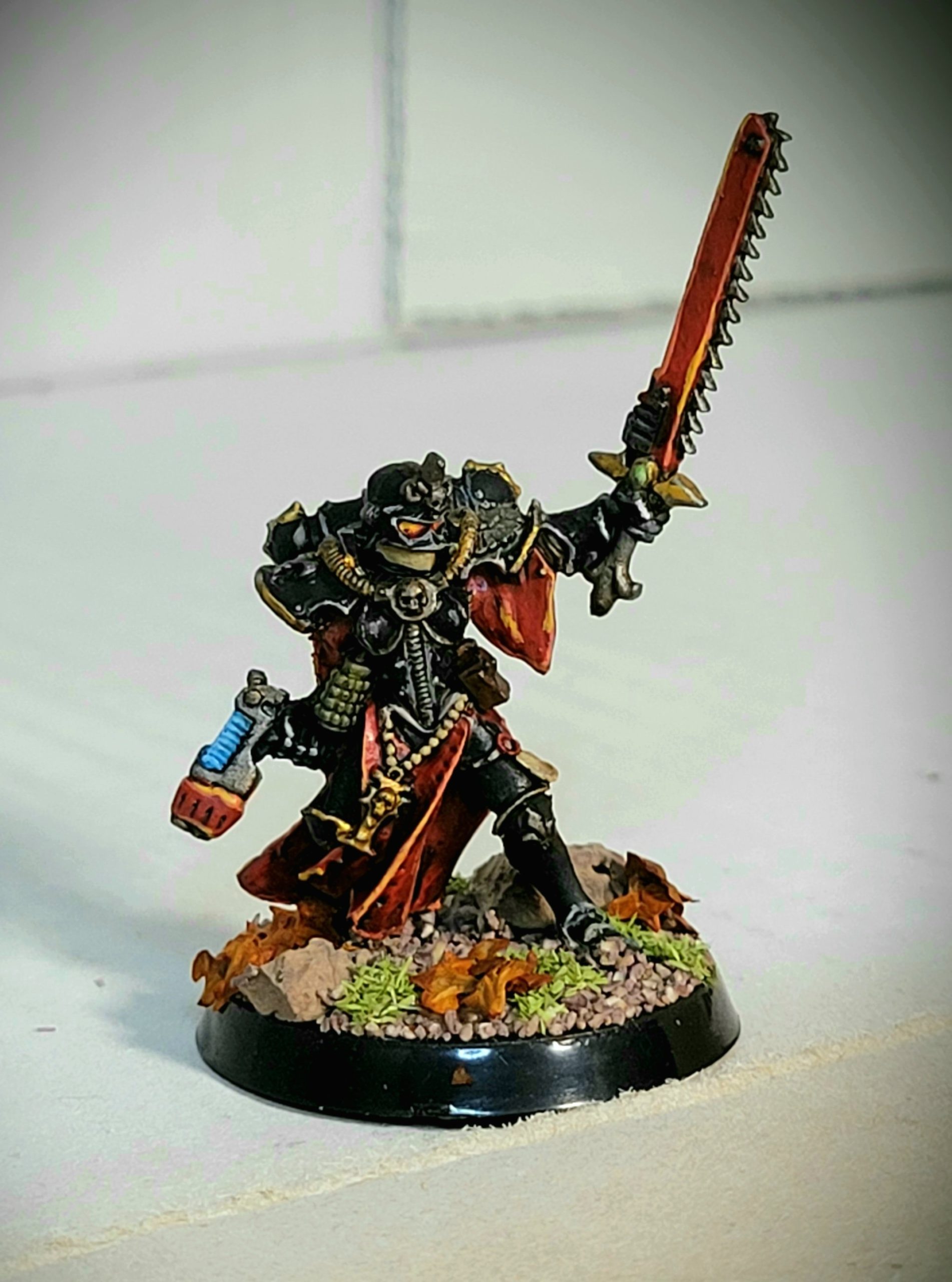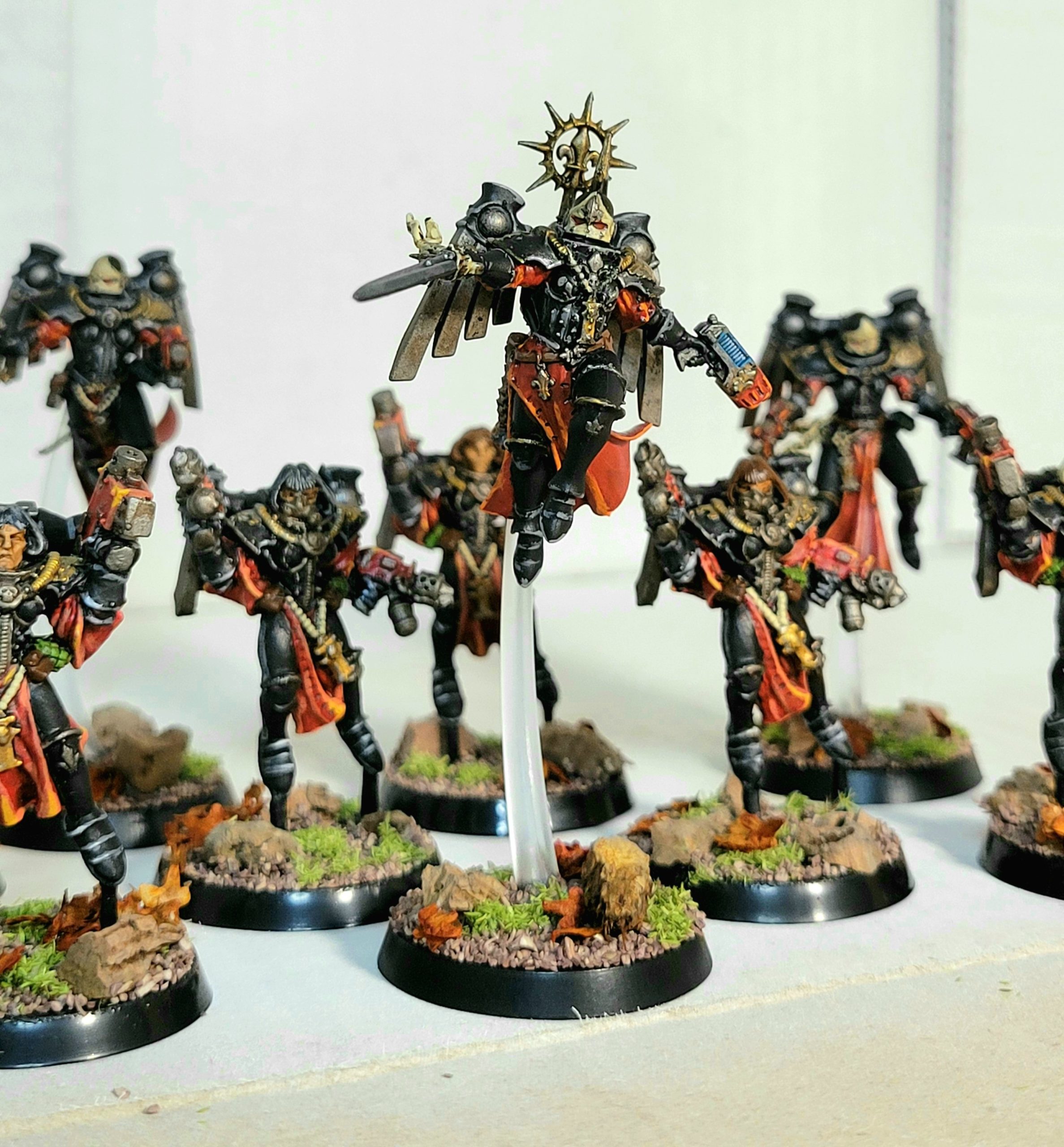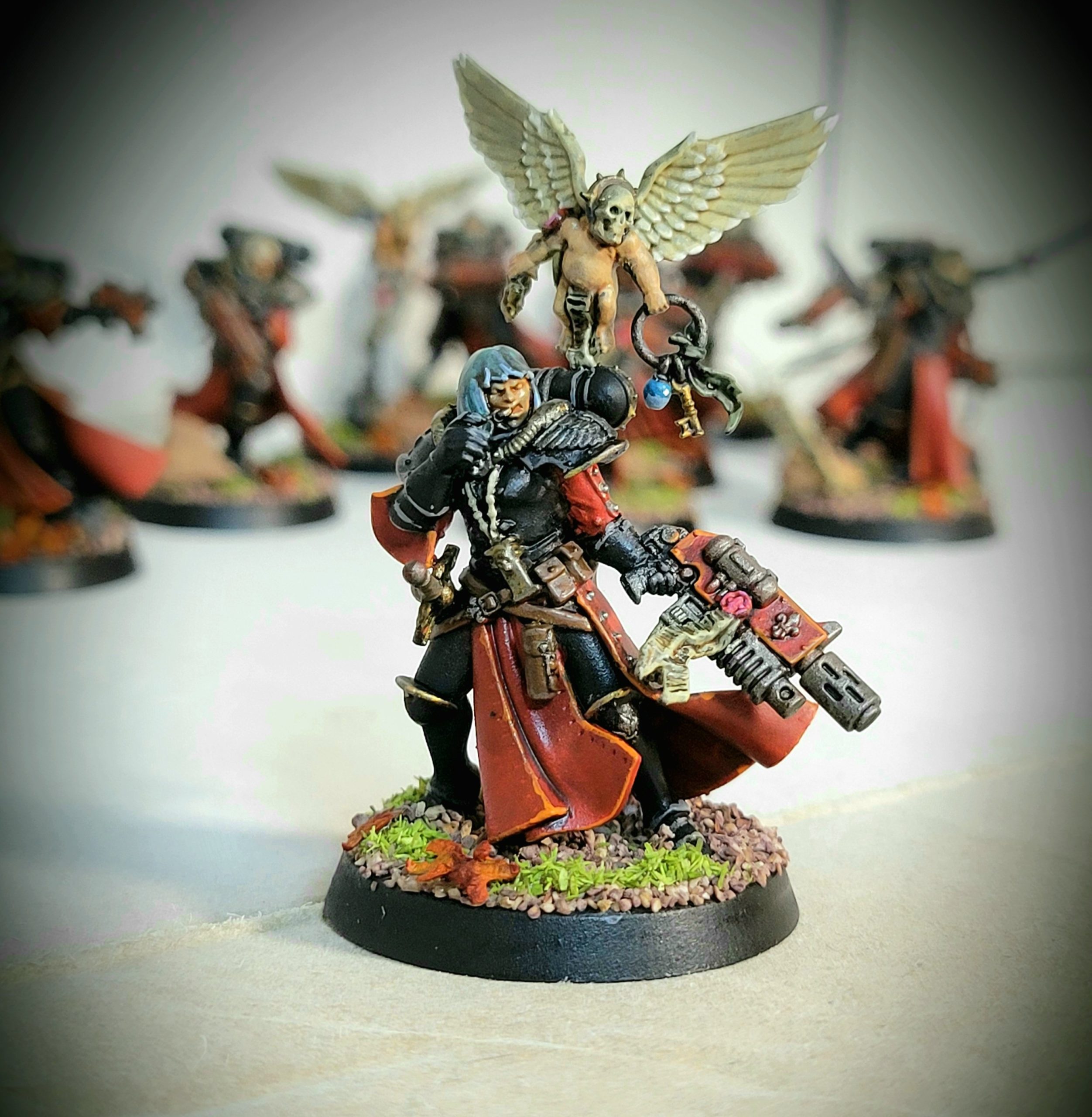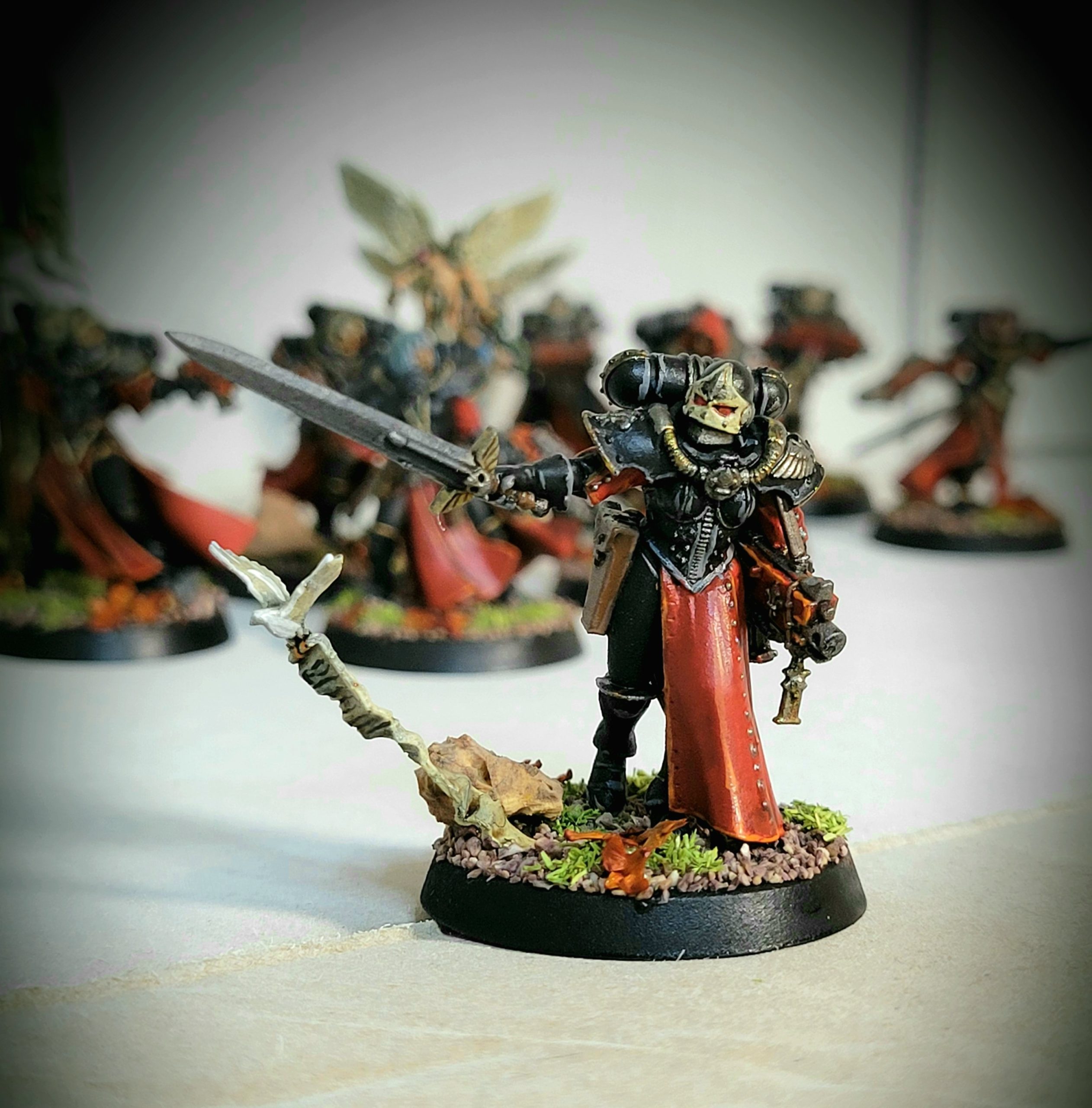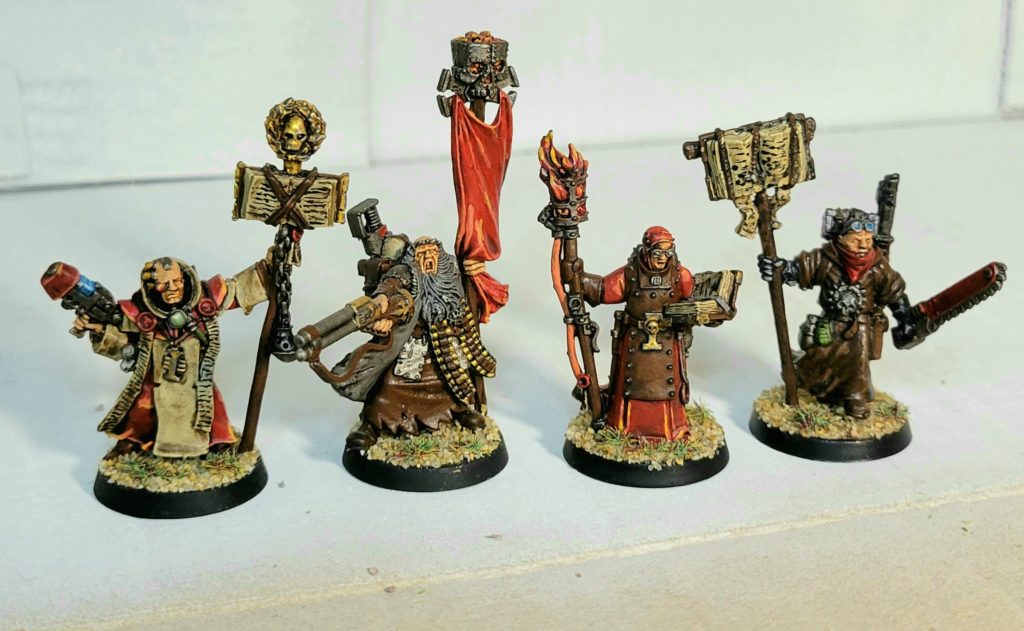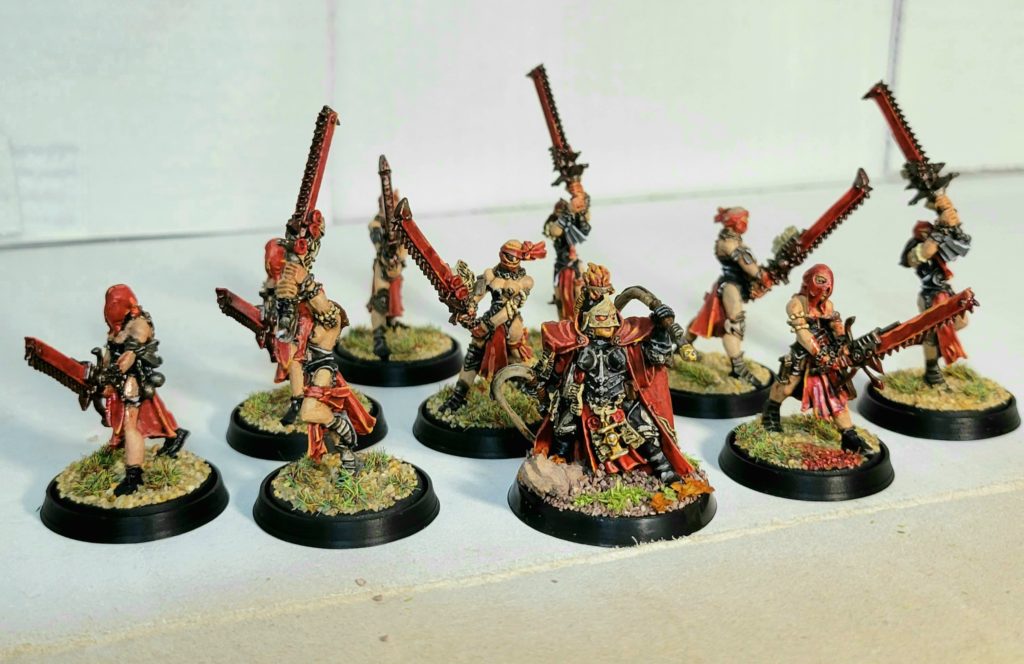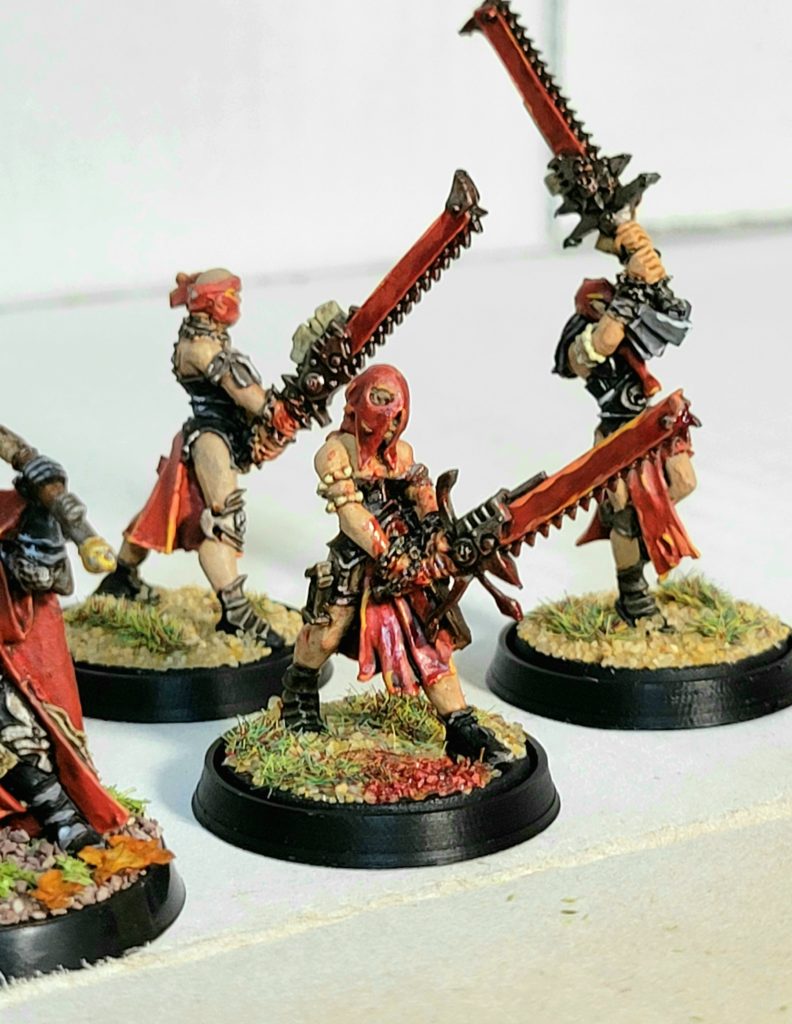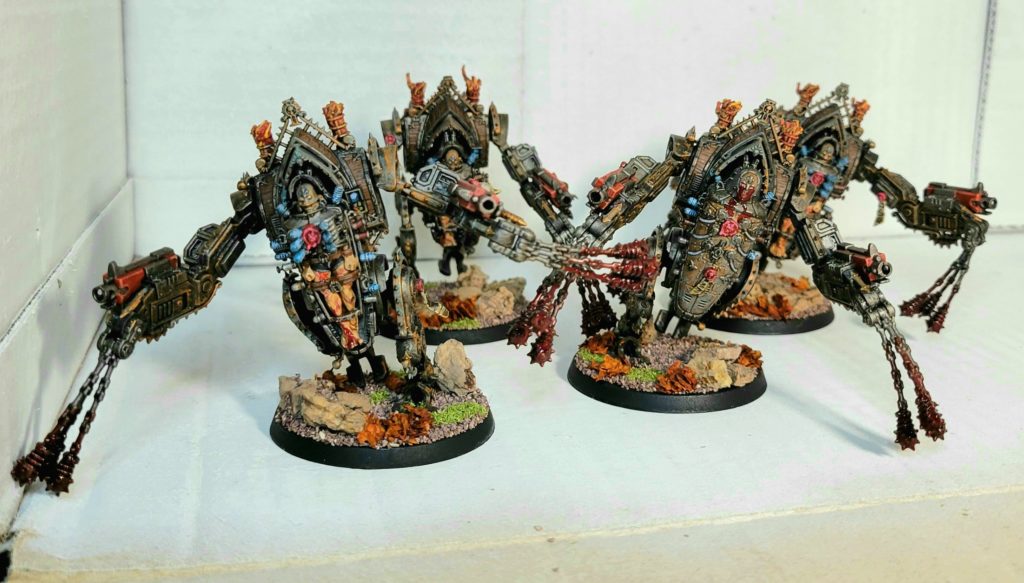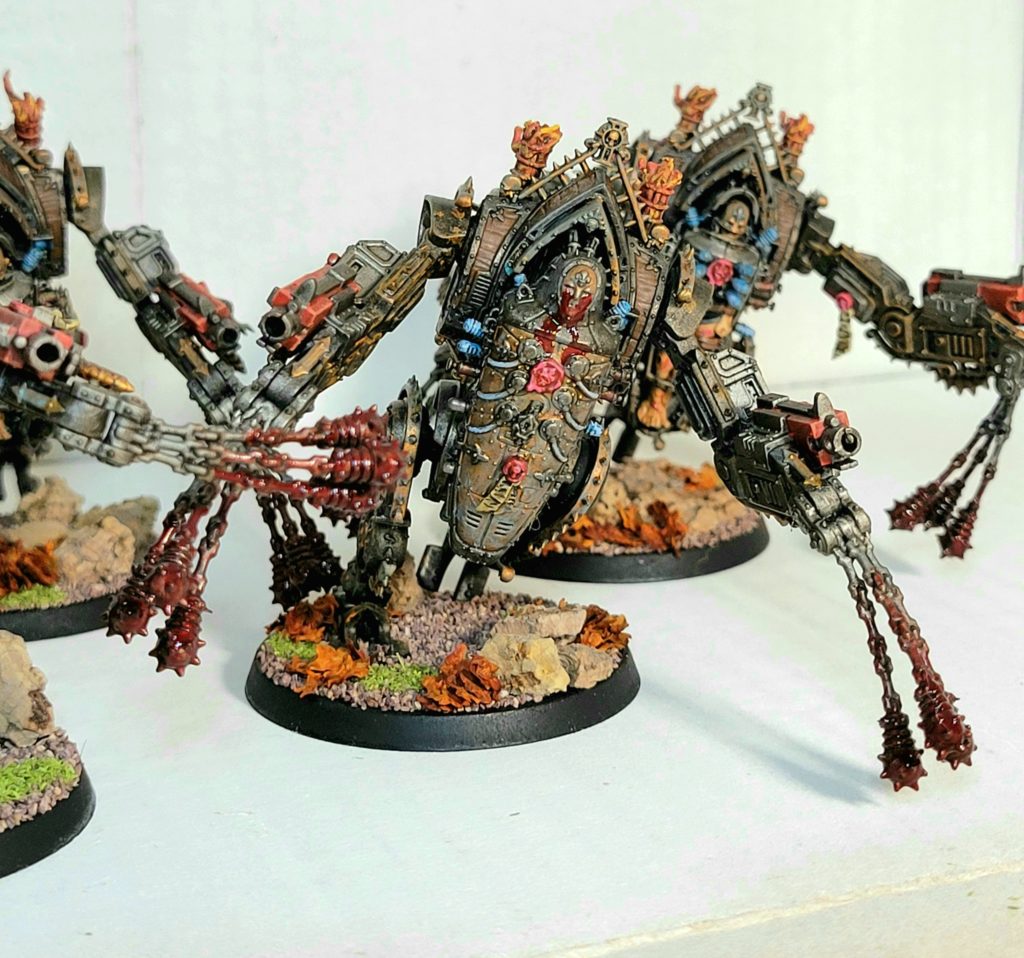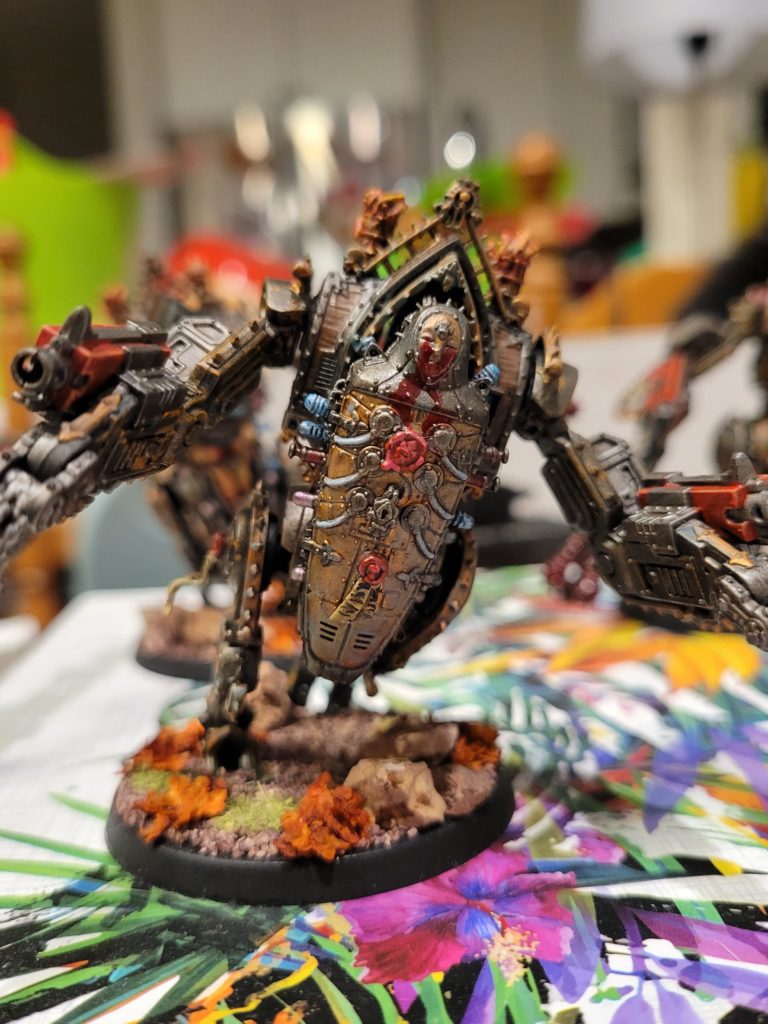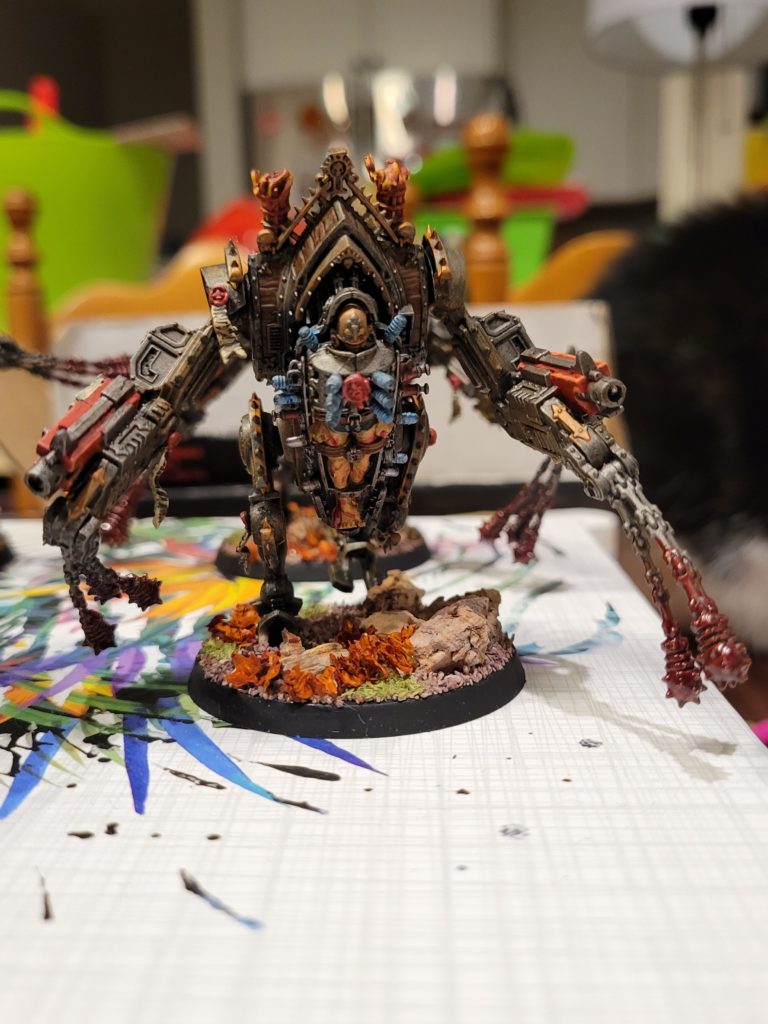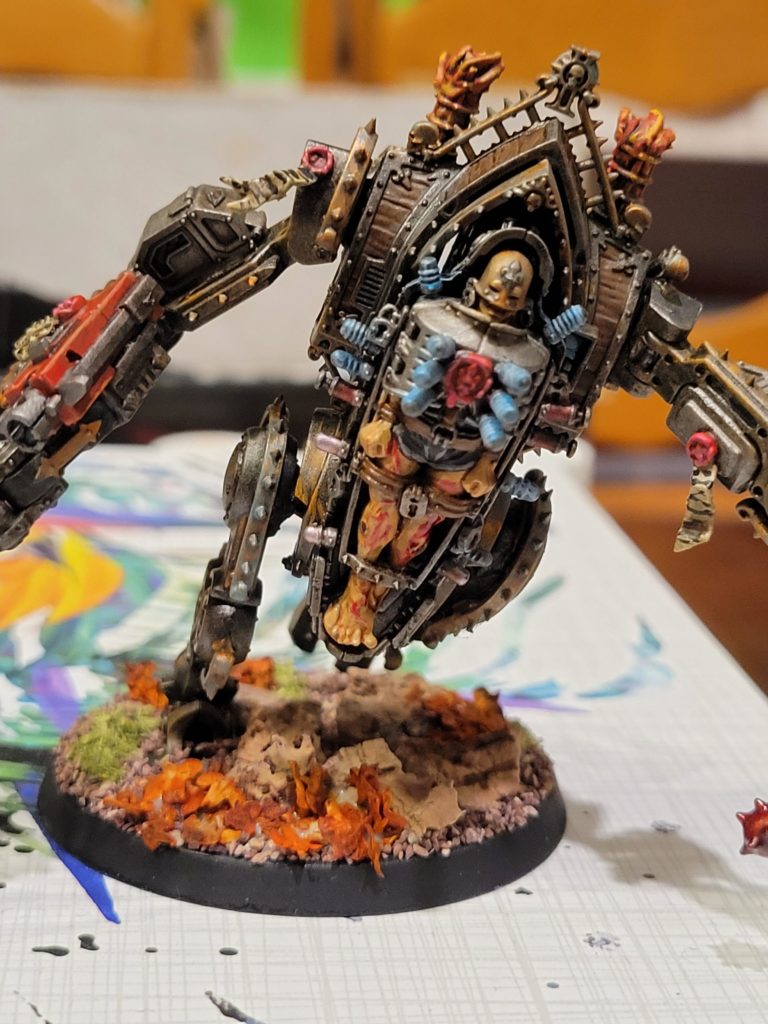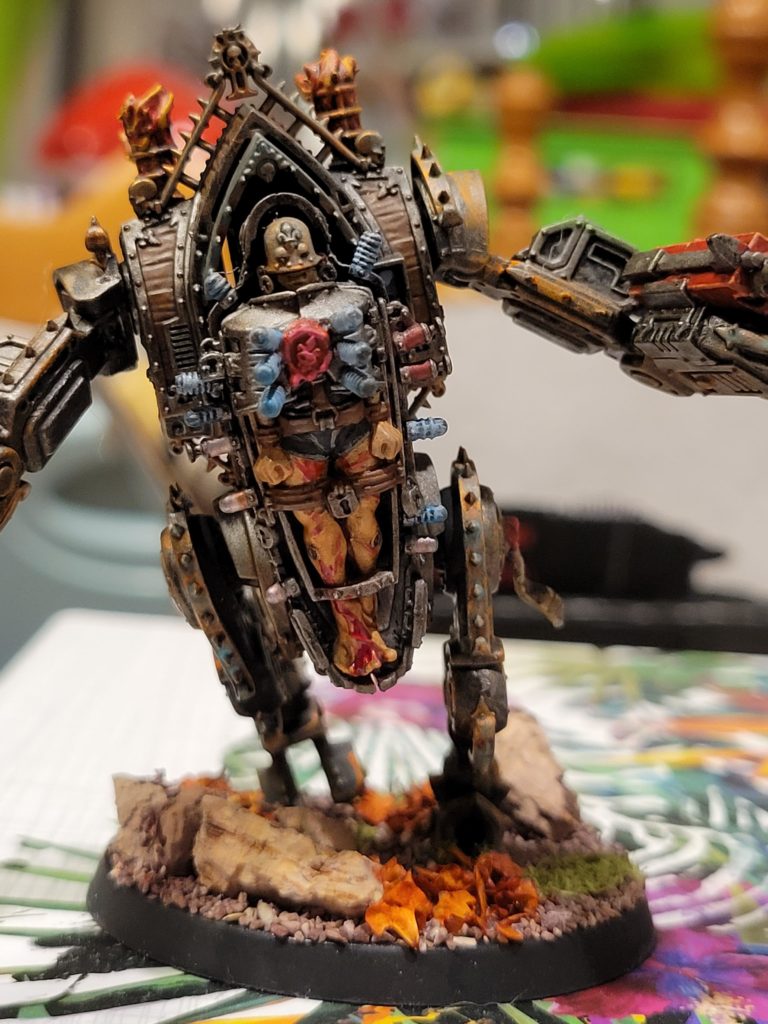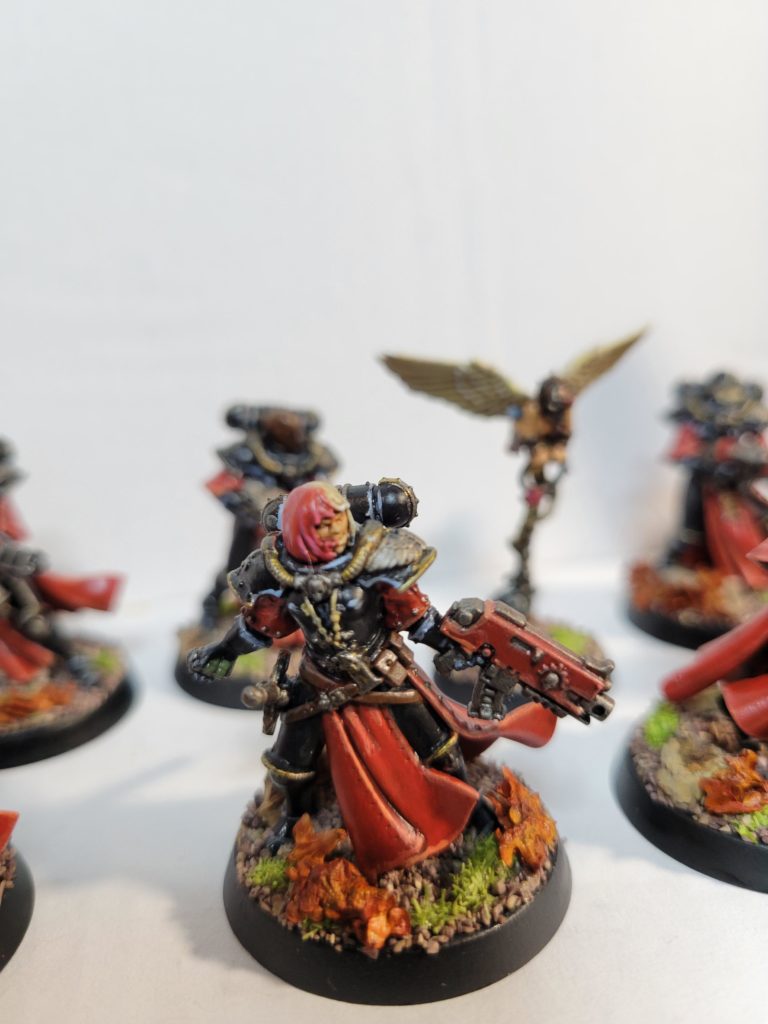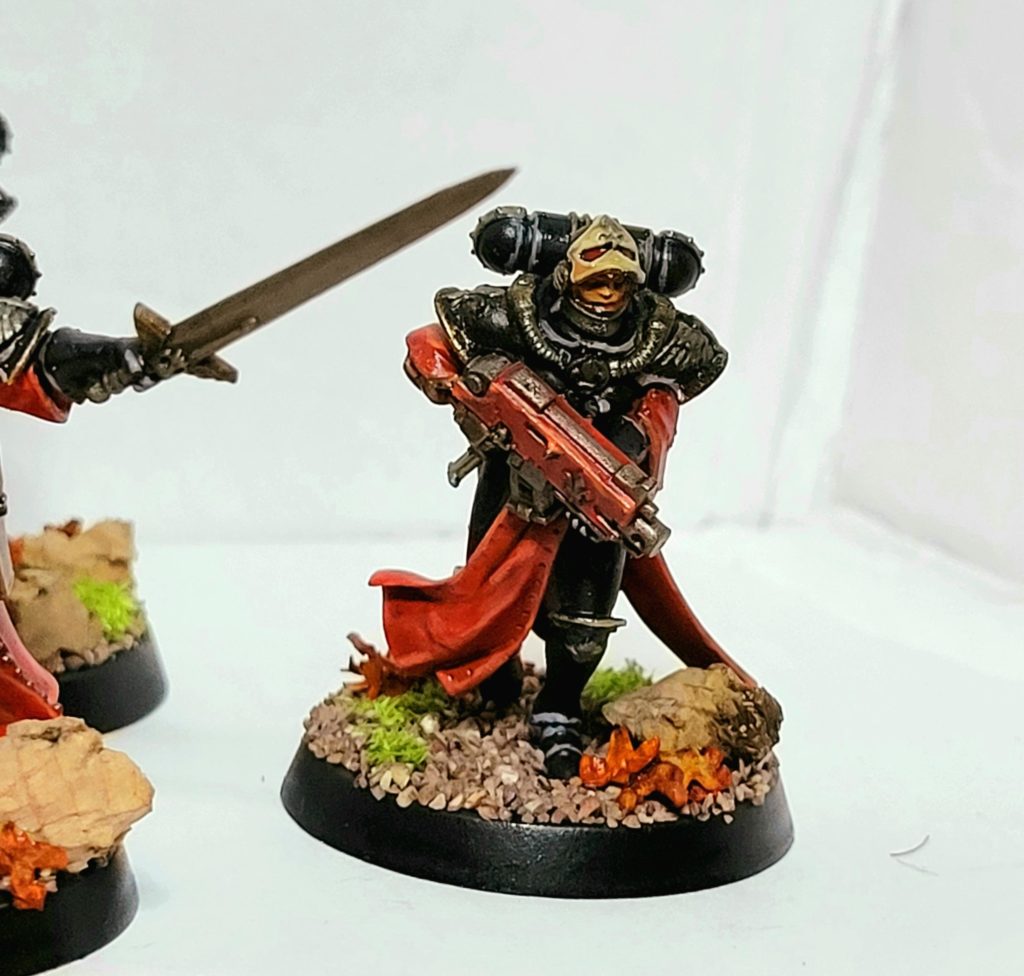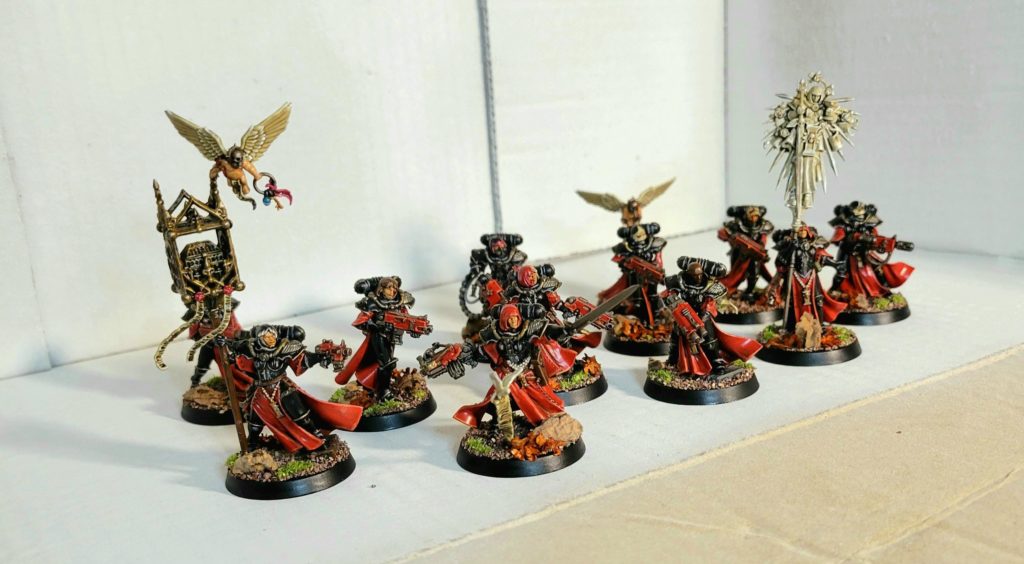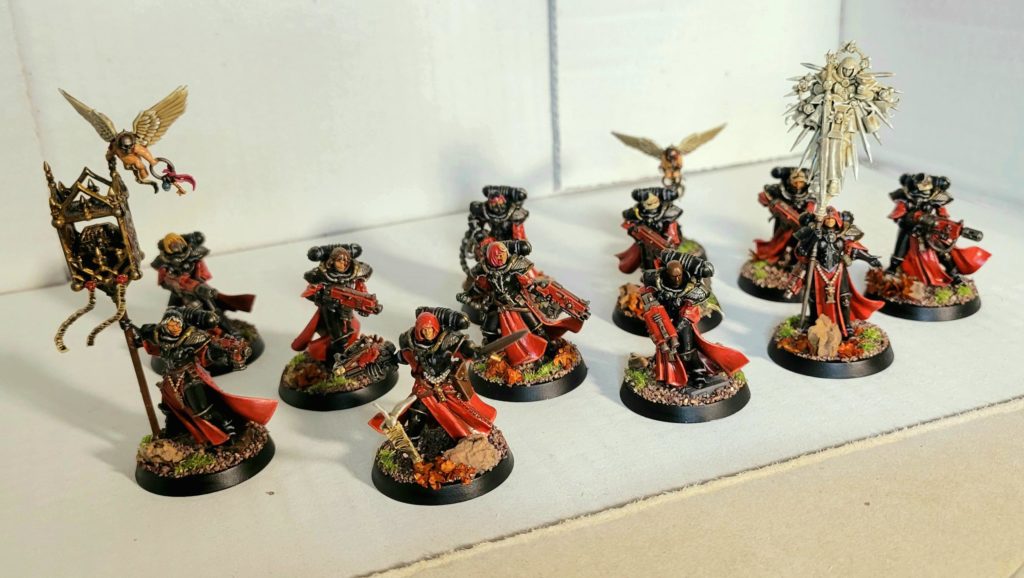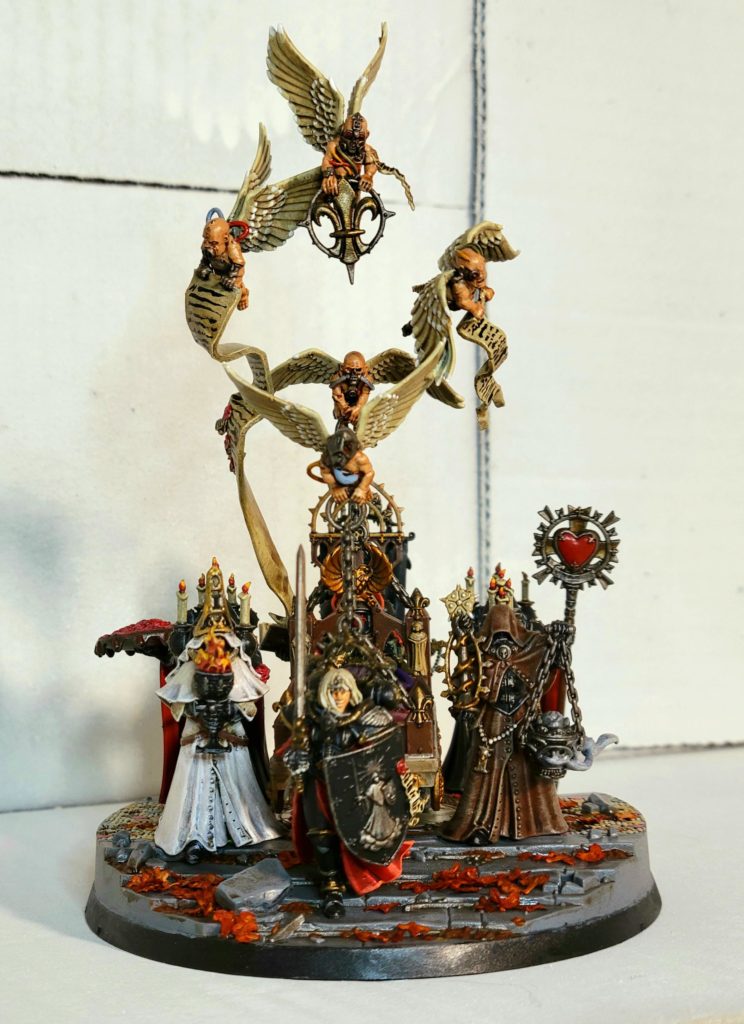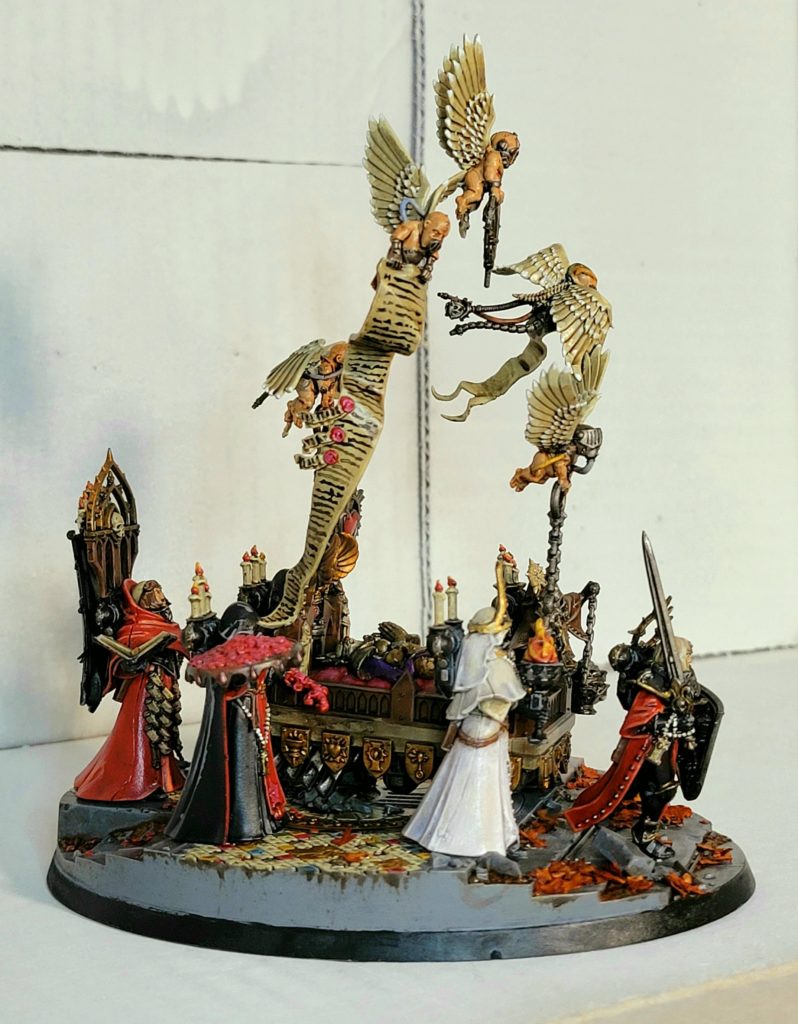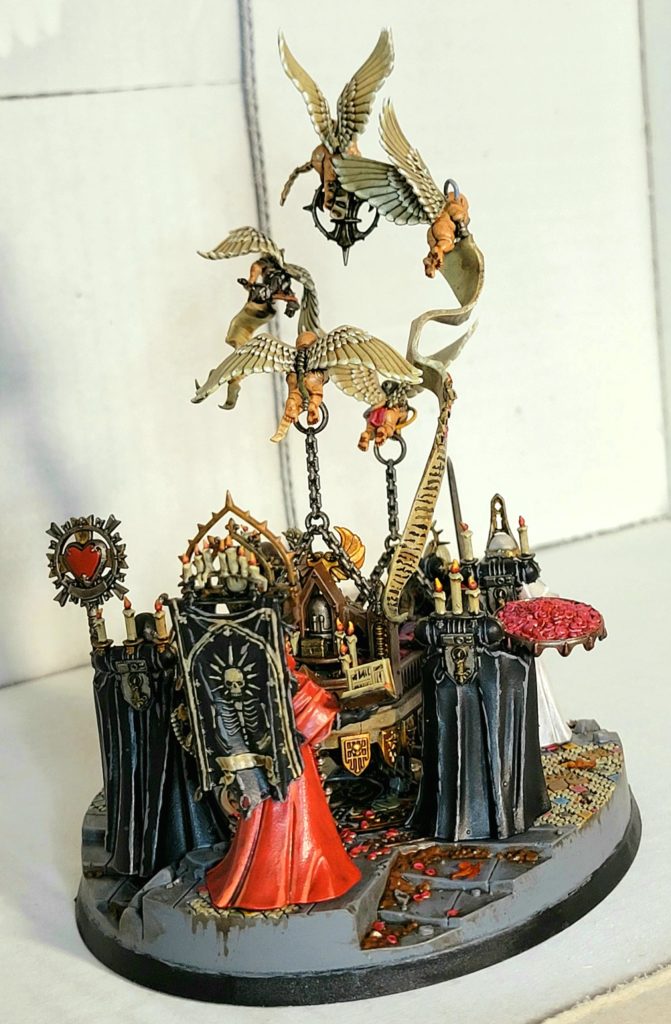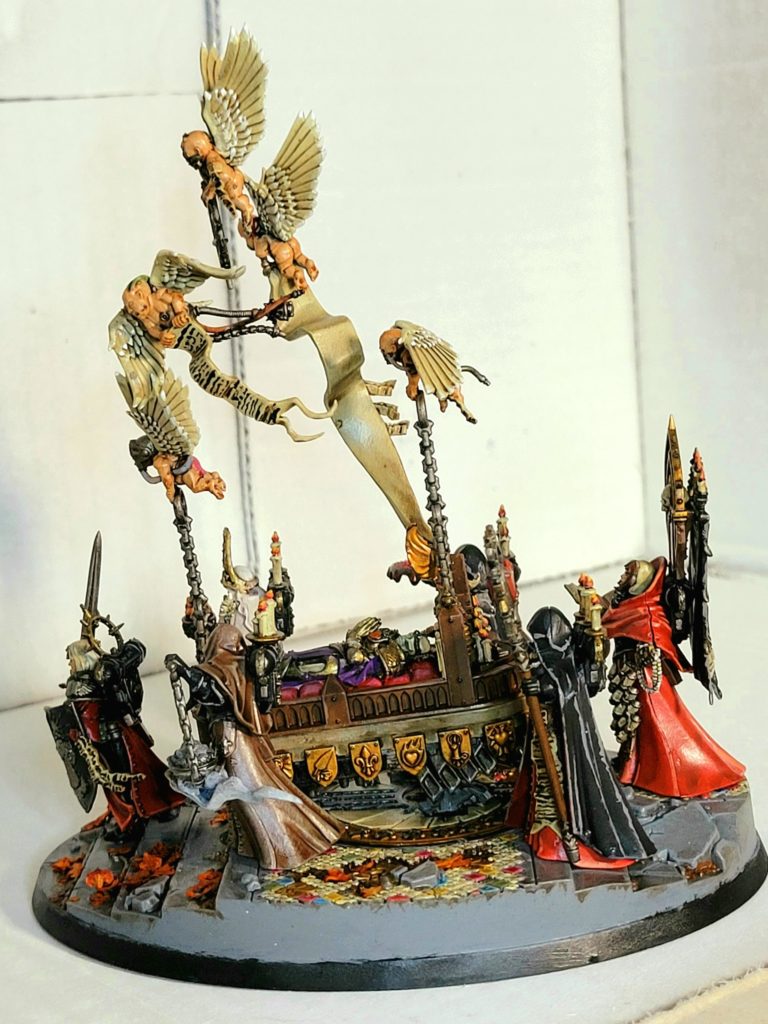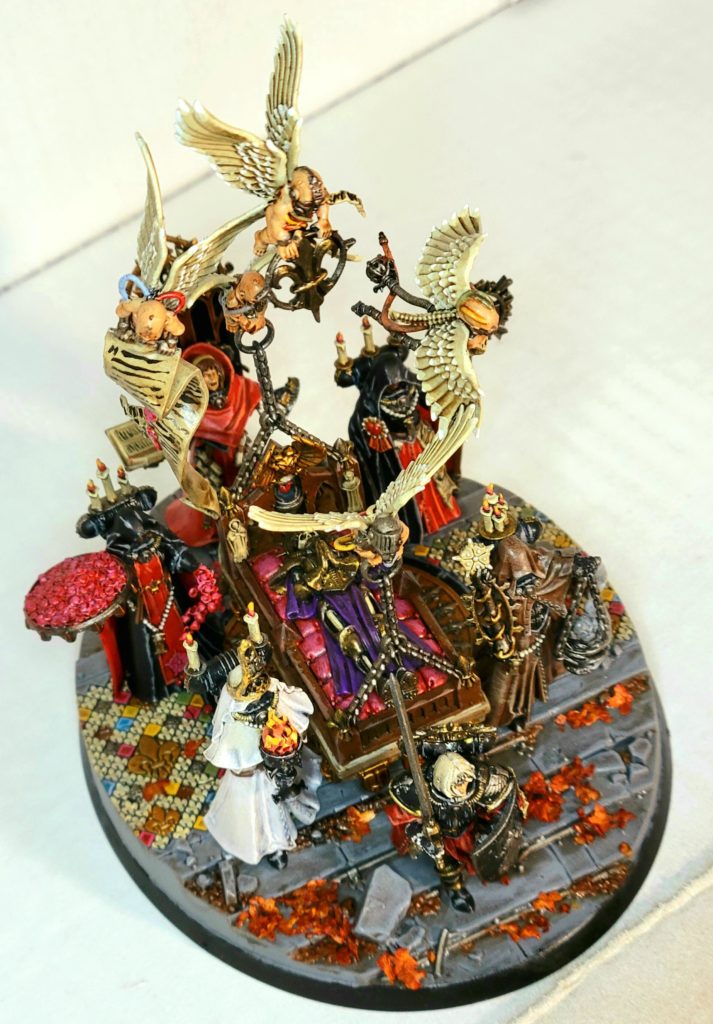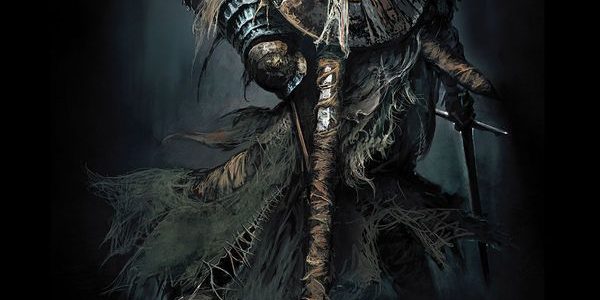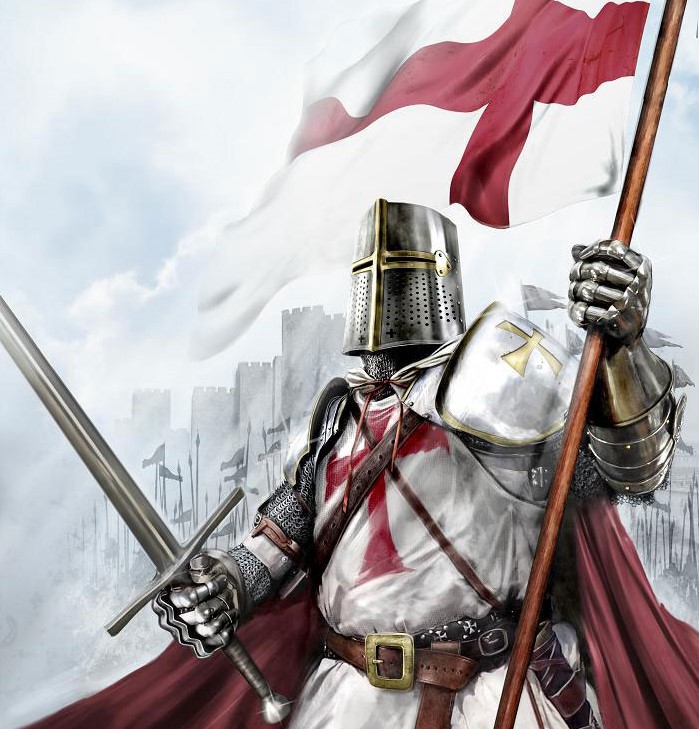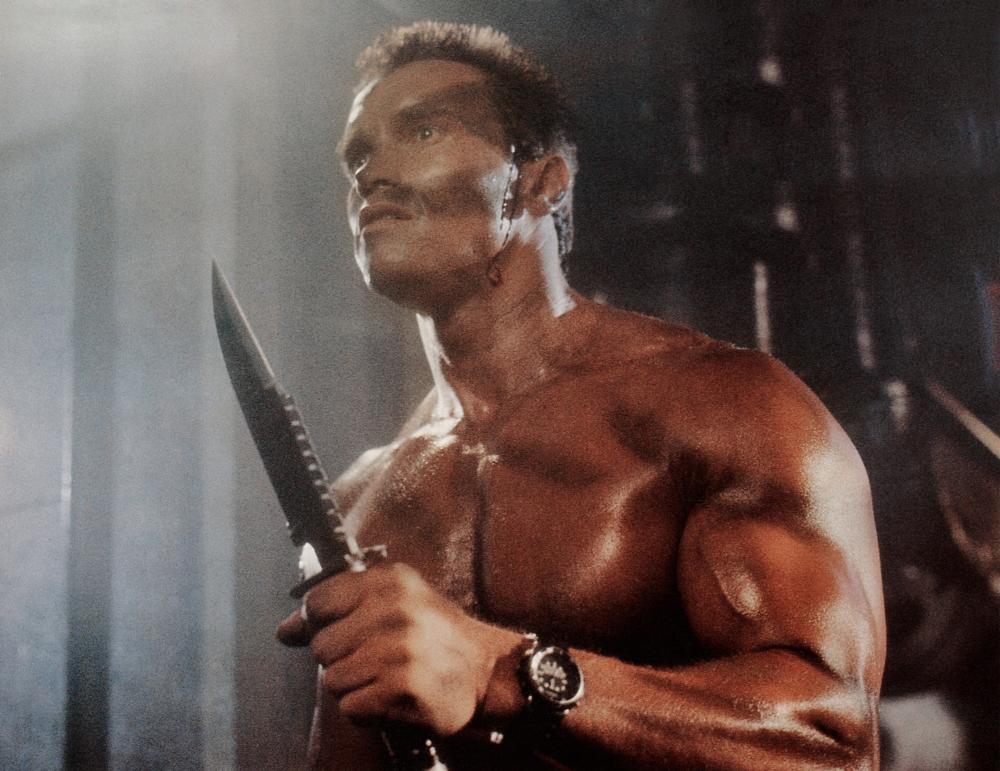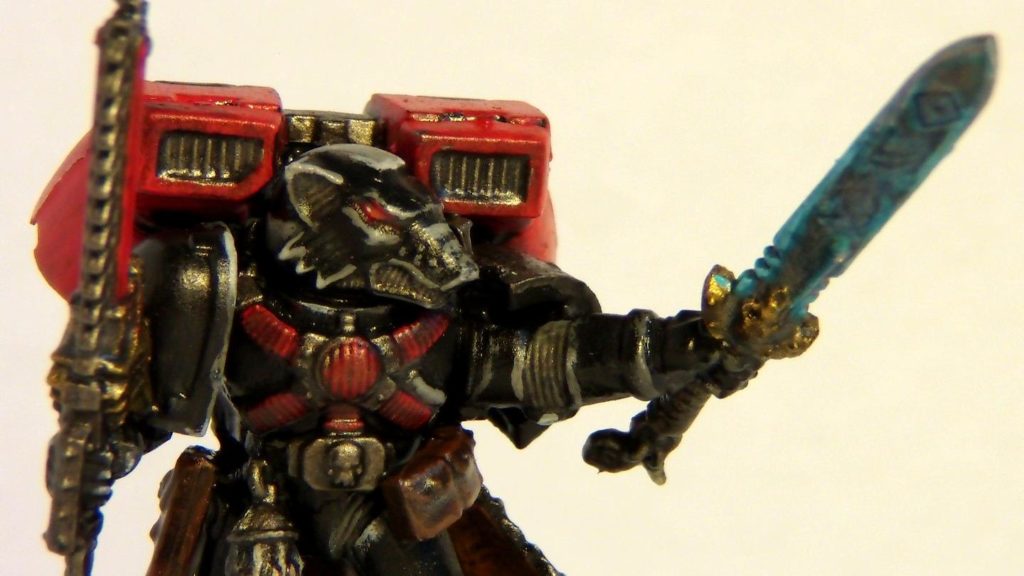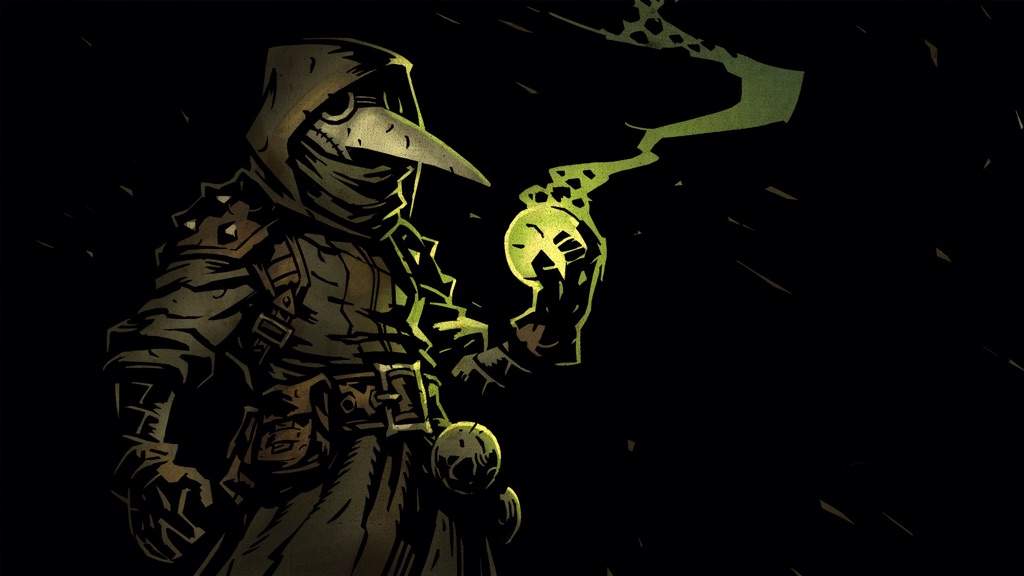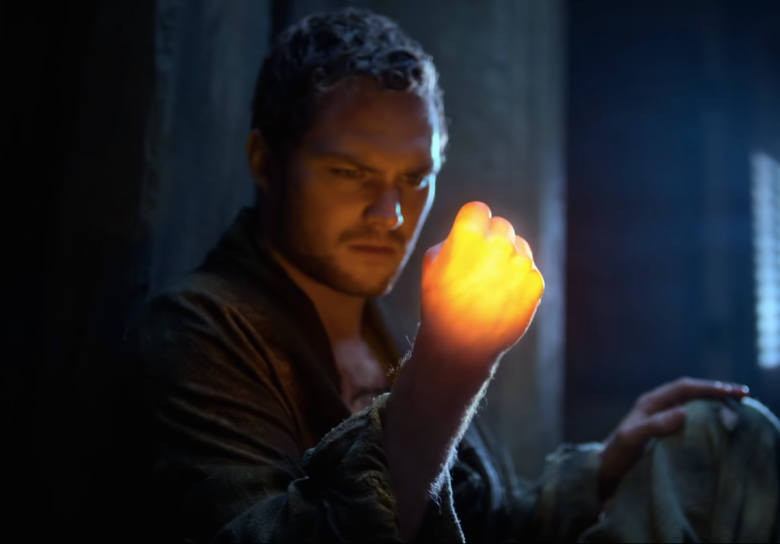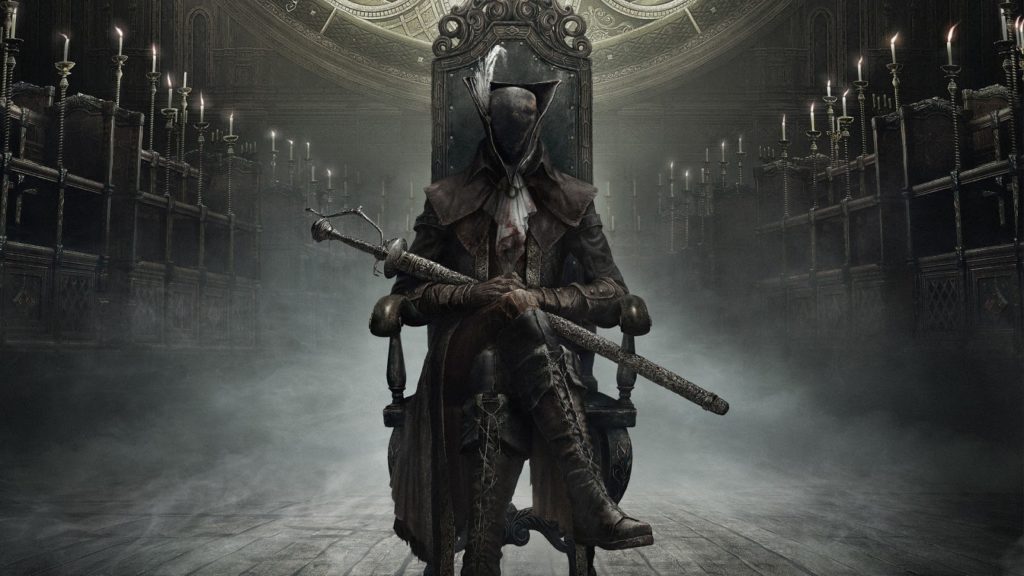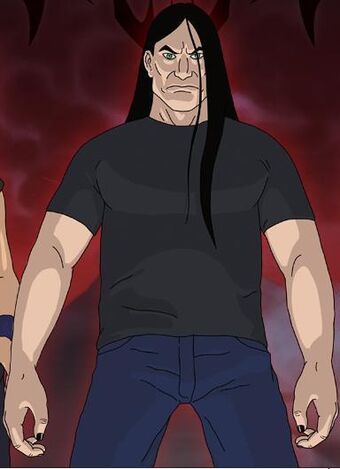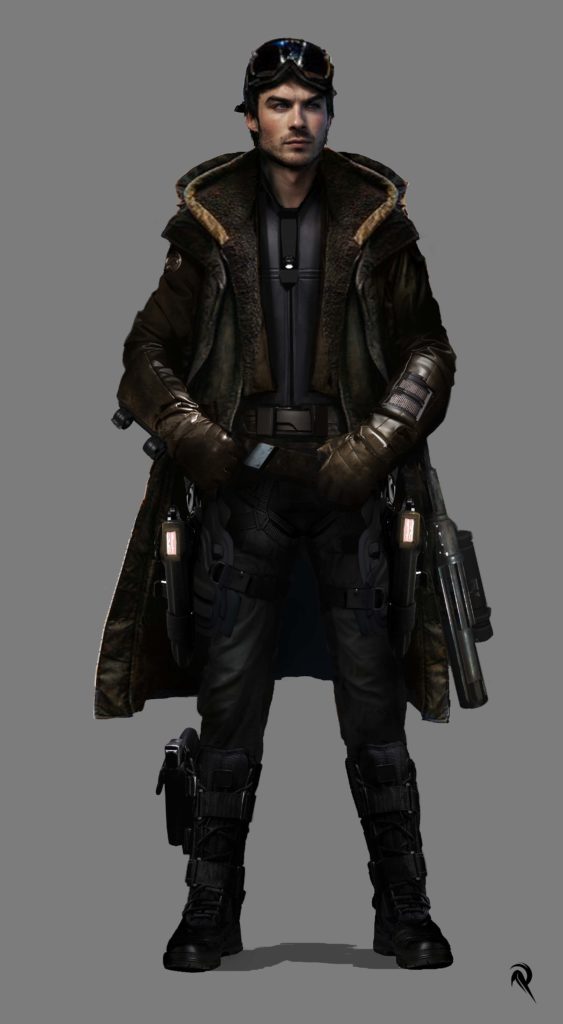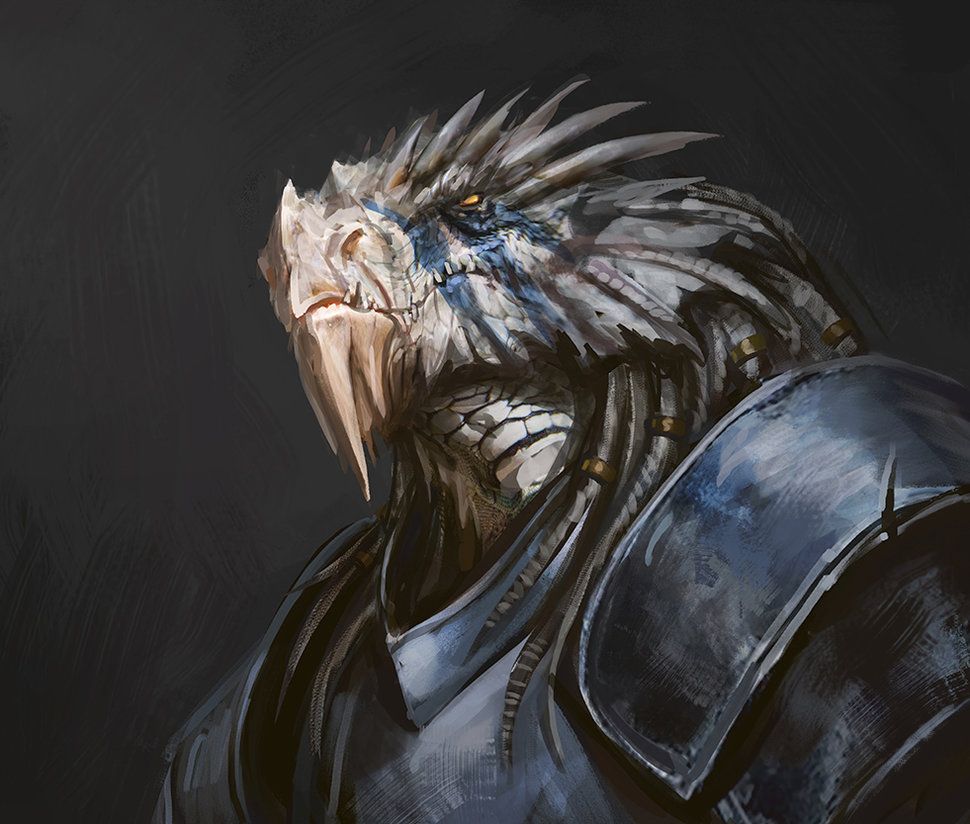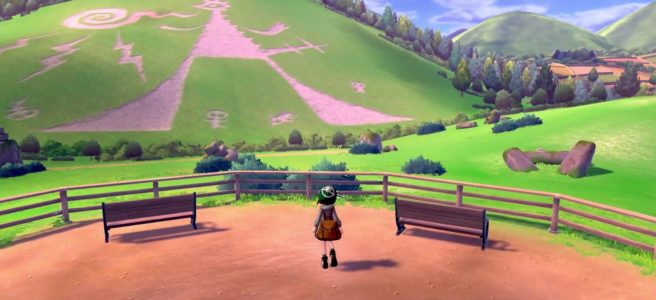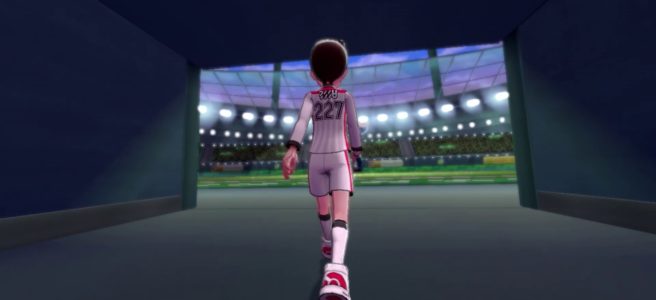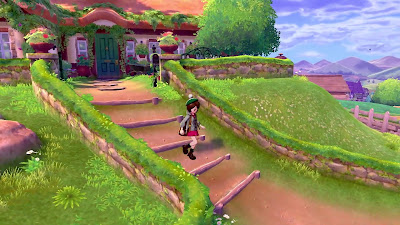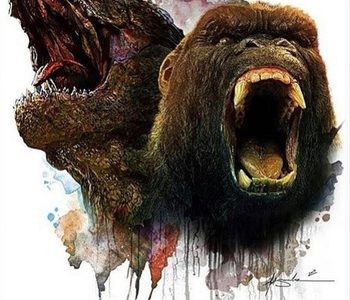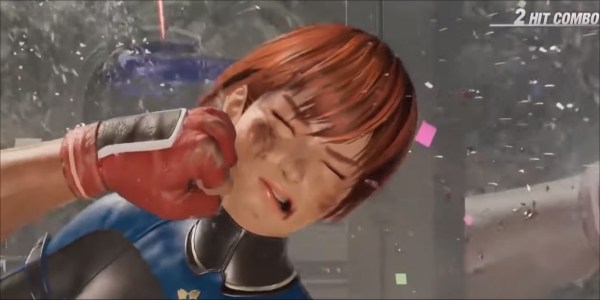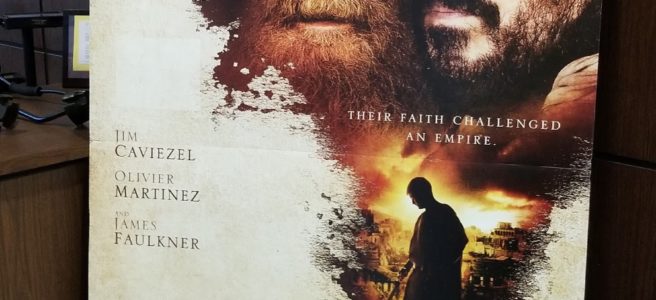Hide your 3D printer and grab your Imperial Infantryman’s Uplifting Primer, the wokes are coming for Warhammer 40,000! Or so you’d believe if you’re unfortunate enough to be a 40k fan on social media these days. The discourse going on right now is absolutely exhausting and I’m at the point where I just want to get all my thoughts out in one place (and preferably in a place that doesn’t have a 280 character limit). So what is all this hubbub about? Simply put, people are arguing about whether female Space Marines should be a thing… but, of course, it’s really about a lot more than that. Let’s get into it, shall we?
As a note, you don’t necessarily need to know anything about 40k to get through this – I’ll try to keep it understandable, but I’m going to have to nerd out just due to the nature of this discourse, as some of the arguments are nonsense if you don’t know the finer details of the lore.
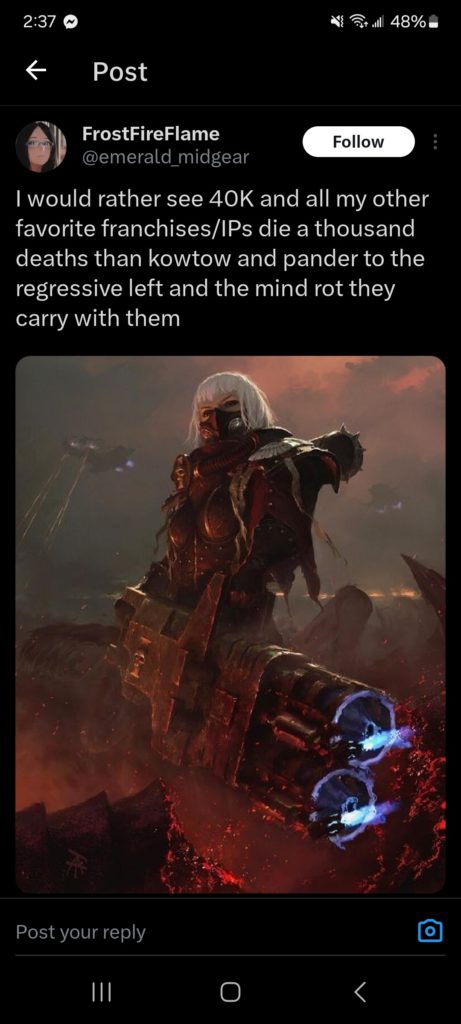
So What Is This Discourse All About?
In Warhammer 40,000, the main, iconic faction are the Space Marines: genetically altered and enhanced super-soldiers who are amongst the most elite warriors in the galaxy. In the lore of the universe, Space Marines are recruited exclusively from young males. It has been this way for about 30 years now and through several editions of the game.
In recent years, there is a growing (albeit, still minority) desire amongst some fans to relax this bit of the lore and allow Space Marines to also be women. There are several arguments in favour of this, which I’ll get to later, but recently this discourse has come to a boiling point again as it has become a rallying point for reactionaries to bring the culture war to 40k. This is also drawing in a lot of people who have never cared about 40k one way or another, but view it as a battleground to push back against “the regressive left”, or as fertile ground for them to grift people through rage and engagement.
That’s the basics. It’s becoming pretty clear to me that Games Workshop are, inevitably, going to need to formally address this at some point or another. So, as a result, we’re left with the question: “Should there be female Space Marines? Why, or why not?” With that question in mind, let’s look into what I consider the legitimate arguments against, and for, female Space Marines:
Arguments Against Female Space Marines
- Monastic Elements – Traditionally, Space Marines have had a monastic theme to the faction’s identity. Most chapters straight-up are based out of strongholds called fortress-monasteries, and a lot of chapters have similar levels of religious reverence that you might expect out of monks. You could argue that allowing women in the Space Marines would dilute this aspect of the army… and, y’know what, that would be fair if that was the reasoning given. That said, these monastic elements are already very diluted compared to where they were in 2nd and 3rd edition, and different chapters have different traditions, so it doesn’t even apply neatly across the faction.
- Fascism/Traditionalism – One could make the argument that the fascist society of the Imperium could be the reason why Space Marines are all male, even if there might be the ability to recruit women. Perhaps The Emperor decreed this, or when he recruited only men to be in the original legions, the chapters have kept this going out of tradition. This could also be a legitimate excuse to keep Space Marines male as far as I’m concerned – it honestly would help reinforce the themes of the setting in ways that are far more interesting and intentional than what we currently have by just handwaving “Marines have to be male, because reasons”. This is a bit shaky though, because, again, Space Marine chapters have incredibly diverse traditions, and the Imperium at large doesn’t seem to have this male/female division in the rest of its military forces (outside of the Sororitas, but that’s because having an all-female army was a loophole for the church to have its own standing army).
- Artistic Intent – If Games Workshop came out and said “Nah, Space Marines are all male, because that’s what we want and we don’t intend to change it”… then, man, how do you even argue with that? I mean, there will no doubt continue to be arguments (and you can certainly argue about an artistic choice you disagree with), but that’d be pretty clear-cut.

Arguments For Female Space Marines
- The Lore Changes All the Time – 40k’s lore isn’t the goddamn Bible. Games Workshop need to sell us new toys, and as a result it changes constantly. The past couple editions have seen some of the biggest lore changes in the history of the game. Just in the past few years, we’ve had the story move forward with the Fall of Cadia, the resurrection of primarchs Roboute Guilliman and Lion El’Jonson, and the introduction of Primaris Space Marines. These were monumental, narrative- and lore-changing events which have fundamentally altered the 40k universe and Space Marines as a faction. And then there’s the lore impacts every time a new faction gets added, or a faction gets fleshed out. Recently we got the League of Votann, a brand new faction which now, it turns out, have always been there actually. Before them, we got the T’au, and then we got the fleshing out of the Necrons, which fundamentally altered an existing faction’s lore (for the better, it must be said). In comparison to all of this, changing the lore to allow female Space Marines is miniscule. You could literally change a couple sentences in the lore section of the rulebook to make it work – either Cawl figured out a way to make female Space Marines work, or they’ve always been a thing, but we weren’t privy to it. If you wanted to make it something more elaborate (like one of the missing primarchs is involved somehow), then that could work too, but in my opinion this works best when it’s simple. People who go “But the lore!!!” as an excuse for why there shouldn’t be female Space Marines baffle me, because that is easily the weakest ground for them to stand on in this fight.
- Gender Essentialism Excuse Makes No Sense – As it stands in the current lore, Space Marines are all male because “the gene-seed zygotes [which are used to turn someone into a Space Marine] are keyed to male hormones and genetic structure”. It’s basically just a hand-wave to explain why things are the way they are, and why they’ve been that way for 30 years. This is one of those anti-female Space Marine arguments that just gets more dated year after year, as discourse about gender and biology become more a part of the public conscious. Like I said in the lore section, it would be incredibly easy to just change this – it’s not like gene-seed is based in any real biology, so it’s not breaking the laws of reality or something for it to suddenly be able to be implanted in women too, whether that’s just retconning it, or having some new development make the process viable.
- Space Marines Aren’t Inherently Male – This is my personal argument in this. Space Marines are all male, but there isn’t anything inherently male about them that would be lost by allowing there to be women in their ranks as well. About the only thing I can think of is that they all call each other “brother” a lot, but that’s more of a sign of respect and comradery. In terms of the faction’s identity, I’ve seen it argued that Space Marines are a male power fantasy, which holds some merit, but I don’t think it’s strong enough to extend to “therefore there should be no female Space Marines”. Space Marines are effectively sexless – they are pumped so full of modifications that they aren’t really human anymore, they’re sterilized and asexual, and most chapters have no personal connection to any normal humans. Given all this, what is lost by allowing Space Marines to recruit from women as well? They will end up the same weapons of war, not defined by their gender. It’s honestly so small a change that Games Workshop could get away with not even making new models to make this work (at most, they could sell a sprue of optional head swaps, so there’s even a financial incentive to consider).
- They’re The Poster-Boy Faction – One common argument against female Space Marines is that people should just play one of the other factions which is mixed-gender instead. Maybe they should, because the other factions in 40k are all more interesting than the Space Marines (well, except for the Aeldari, because fuck elves), but Marines get the majority of the attention in the game and are likely going to be the first faction for most players. It doesn’t seem unreasonable to me to wish that the noob-friendly faction could have some more representation for women as it might subsequently draw more people in. From my understanding, this is pretty much the core argument for why people wanted female Space Marines in the first place.
- Space Marines Are Meant to Be Personalized – Ever since the first Tactical Marine box was released, Space Marines have been meant to be highly customizable. The entire point of chapters and the various foundings is for you to be able to make up your own custom chapter and tell your own stories. The introduction of Primaris marines in 8th edition reinforced this, opening up the lore so that chapters that used to not have a “lore justification” for having additional foundings now could. Hell, the 40k universe has intentionally been designed as a playground you get to tell your own stories inside, rather than a grand narrative like something like Star Wars or Marvel. It’s an inherent aspect of the miniature hobby that you have full control over the painting, design, and customization of your minis, and that is represented fantastically through the Space Marines’ diverse array of traditions and options. In light of that, if people want female Space Marines in their chapter, it seems in-line with this philosophy to allow it as an option. Similarly, if people wanted their chapter to be all-male, then that would be fine too within that customization, but at least people would have the option this way.
- There Used to be Female Space Marines – In 1987, Games Workshop sold two women in power armour with bolters and swords. Ever since, they’ve been a contentious aspect of the lore. Were they Space Marines (which were a thing at the time), or were they actually Sisters of Battle (which weren’t a concept yet)? Legend has it that they didn’t sell well, so Games Workshop phased women out of the Space Marines and made them all male to appeal more to the young boys who were their primary audience at the time. Supporting this theory, several armies also had female models get phased out of production, although the Space Marines were somewhat unique as this got extended to their lore as well, which would become more solidified and recognizable to the 41st millennium we know today by the time 2nd edition dropped in 1993. We could argue that female Space Marines are a call-back to the game’s history, although (to be fair) that was a time when 40k wasn’t even 40k.
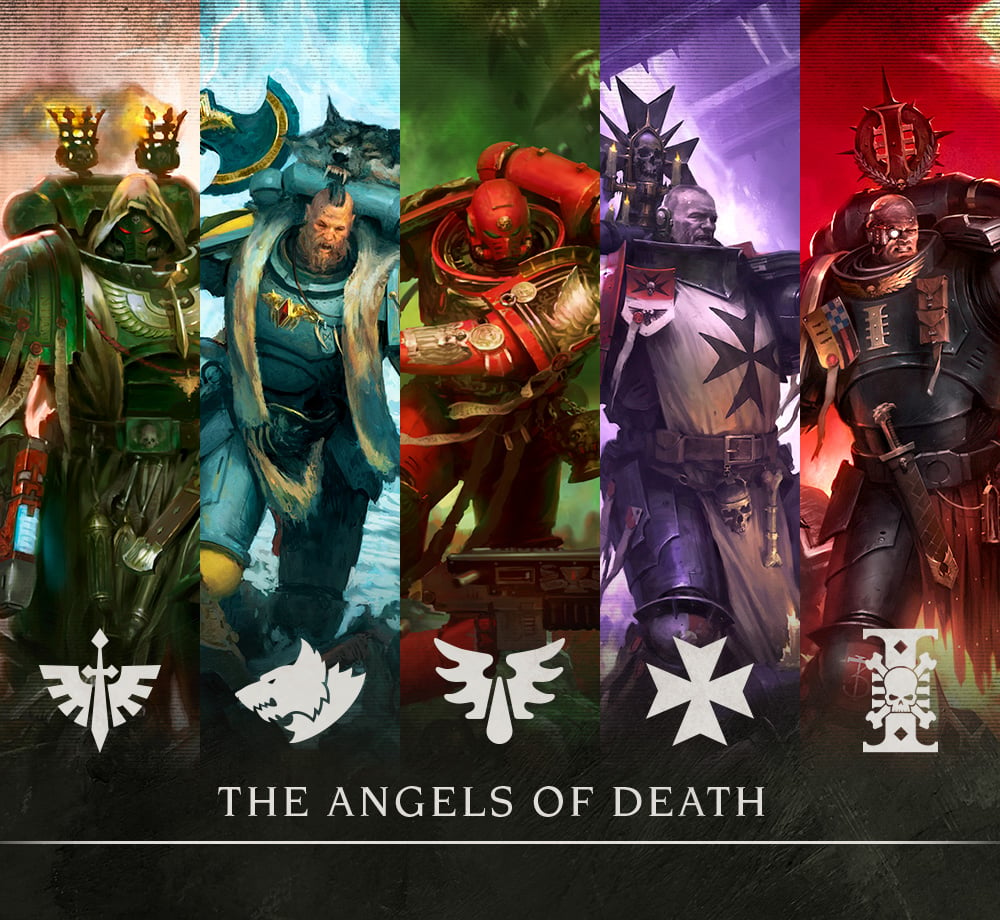
Those are the legitimate arguments, for and against, as far as I can see them… and it should be pretty obvious which way I lean on this. There are other arguments though, and I’d be neglectful not to go over those as well:
Other Arguments Against Female Space Marines
- The Sororitas Are the Faction For Girls/Are All-Female – I alluded to this one earlier. The Adepta Sororitas (aka Sisters of Battle) are held up as the female version of Space Marines, but they’re not quite the same thing. While there is some overlap, they ultimately aren’t the same since they are not super-soldiers, are physically much weaker, have a far different aesthetic, theme, and playstyle, and do not have anywhere near the same recognition and exposure as Space Marines do. They’re also 100x more interesting that Space Marines, but that’s a completely different argument altogether… Oh, and there’s also the argument that Sororitas are all-female, so Space Marines should stay all-male. Put simply, in the tabletop game this isn’t accurate: the Sororitas have multiple male units and characters in their army (specifically: Priests, Missionaries, Crusaders, Arco-flagellants, and Penitent Engines; they also used to have several more in previous editions, but these have been sectioned off into the Inquisition supplemental codex or discontinued). You can theoretically make a whole Sororitas army with nothing but male models if you wanted to. I recently got into it with a guy on Twitter who said that these “don’t count” and even argued that Penitent Engines and Arco-flagellants don’t count as male because they are just drugged-up killing machines… first of all, they make sure that these heretics are still somewhat lucid so they can torture them more for their sins, and secondly, at that point do they even consider Space Marines to be male? There are people who will argue that the Adeptus Custodes to be a mixed-gender army because it has six Sisters of Silence units (one of which is a named character, one of which is a generic leader, one of which is literally just a generic transport tank, and three of of which are literally just the same models with different weapons options), but will also argue that the Adepta Sororitas are all female because it suits their argument (and if the Sororitas are not all female, then there is no all female faction in 40k). Ultimately though, this argument is entirely a distraction from the actual discussion about female Space Marines and not worth getting into all the pedantry required to wade through it. Keep the argument on the question of female Space Marines where it should be.
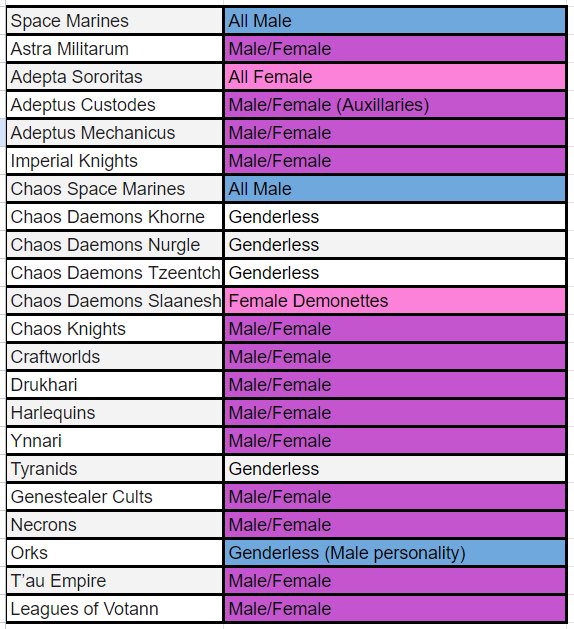
- Goes Against the Lore – I’ve already addressed this previously, but there certainly is the argument that the existence of female Space Marines goes against the lore. If you view the lore as something that can’t/shouldn’t be changed, then I’m probably not going to convince you, but it’s the shakiest ground you could hinge this argument on. The options available to outright change the lore, or to introduce new elements to make it work, make this incredibly weak and the people making it must be constantly pissed off whenever a new 40k product comes out.
- Why Are You Injecting Politics Into My Escapism? – Guys, if you are legitimately entertaining this idea, you need to take a long, hard step back and re-evaluate this. You’re saying you can’t enjoy a piece of media anymore because there’s a woman in it? You’re saying that, because they wanted to appeal to a wider audience, you can’t enjoy your hobby anymore without thinking about politics? Does progressive society make you so miserable that you have to retreat into your hobby and try to shut people out? That’s just silly. This is the sort of argument that you can hold and scream to the heavens about, but it’s not going to convince anyone one way or another.
- It’s Misogynist/Sexist! – LOL. That’s all I really need to say about this take. Basically, some people try to claim that forcing women to go through the initiation process is torturous and would be misogynist/sexist. It’s a transparently bullshit argument and clearly just an attempt to use “woke” words to make their ideological enemies look like hypocrites. Don’t even entertain this kind of idiocy.
- Why Are You Injecting Your Fetishes Into My Hobby? – LOL. Do I even need to entertain the argument that people want female Space Marines because they want dommy muscle mommies? No one is seriously motivated by this idea.
- The Wokes Will Destroy 40k! – Finally we get to the core of the latest round of discourse about female Space Marines. In the wake of Gamergate, outrage merchants and political strategists have found that nerds will work themselves into a frothing mess when they think that their properties are being threatened with change. The culture war has made engaging with nerd properties fucking exhausting for the past decade. Star Wars is probably the clearest example of this – the sequel trilogy didn’t ruin Star Wars. Wokeness didn’t ruin Star Wars. The toxicity which has invaded the fandom in the wake of The Last Jedi‘s divisive reaction is what has made this franchise exhausting to interact with. It’s turned into a narrative that woke Kathleen Kennedy and Rian Johnson are trying to destroy the brand, but Jon Favreau and Dave Filoni are there defending it for the real fans… but they are also responsible for The Mandolorian season 3, The Book of Boba Fett, all the shit parts of Obi-Wan, and forcing Filoni’s OCs into canon at every opportunity. Meanwhile, we’ve got Rogue One, which people complained had another (!) female lead before release, and Andor, which is probably the wokest Star Wars has ever been, is nearly universally acknowledged as the best Star Wars project since the originals… So maybe “wokeness” isn’t the issue, but rather that Disney is sucking the life out of the brand and mismanaging it. That’s a long tangent to go on about why the woke 40k argument is fucking bullshit, but it illustrates the point – they’ll point to all these other properties that “wokeness” ruined, but when you look into it, it’s almost invariably bullshit. Female Space Marines are viewed as the first step to wokeness ruining 40k, but I just can’t see it. The entire appeal of 40k is that it’s a fascist hellscape, and I don’t see a single person interested in this setting wanting that to change, including the vast majority of people who want female Space Marines. If you believe the slippery slope argument and that’s what’s motivating you to push back against female Space Marines, you’re a fucking rube. I had an argument years ago with someone who similarly believed that having wheelchair-bound mini-figs was representing the woke-ification of Lego. It was an absolutely mad argument at the time, and the intervening 8 years have shown how fucking stupid this kind of logic is.
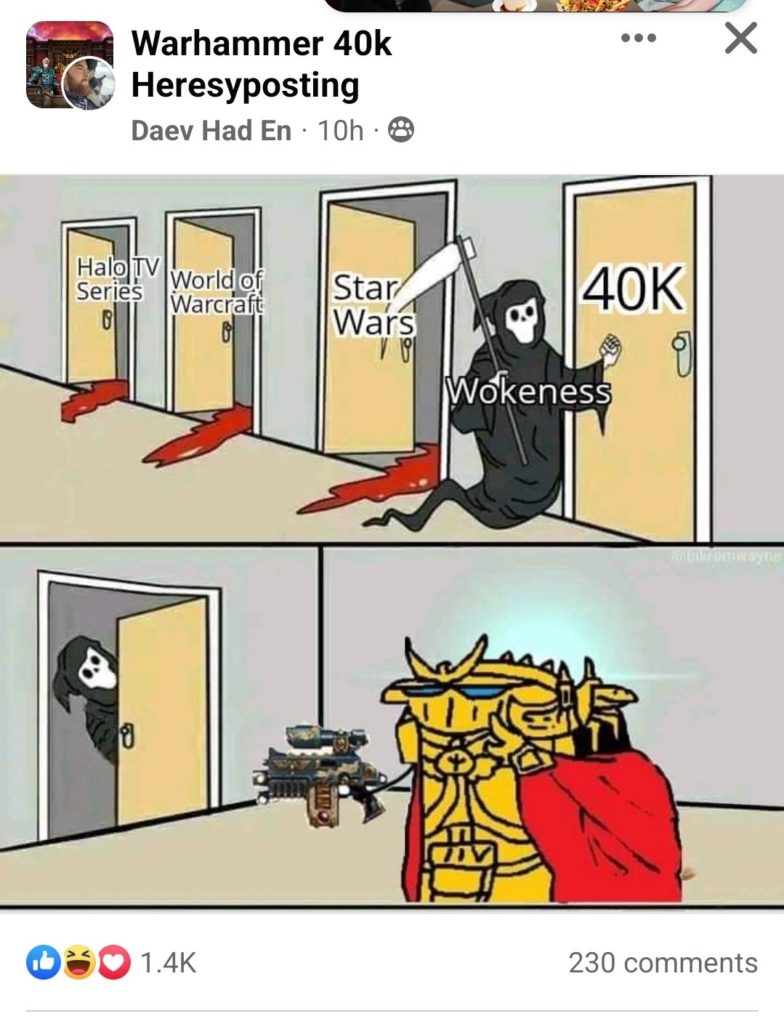
Closing Thoughts
When it comes down to it, I have the same philosophy when there are calls to make a change in a media property: “is there a legitimate reason not to do this?” With female Space Marines, I see very few reasonable reasons not to introduce them into the game – the impact on the game and lore would be miniscule, while the upsides of making more people feel welcome and giving people more options for their armies is obviously a great thing. Games Workshop clearly agrees as well – just look at the Stormcast Eternals, the fantasy equivalent of Space Marines in Age of Sigmar, who are filled out with a cast of colourful men and women. It’s a different system of course, but it shows you that this is something they’re aware of and that they would do differently if they were to start fresh. If the idea of welcoming more people into the hobby is repulsive to you, then you are the problem.
Also, funnily enough, this whole discourse is reminding me of when I was a crusty gatekeeper in the 40k community. Around 12 years ago, bronies were infiltrating the 40k community. You couldn’t go on Dakka Dakka without seeing a brony avatar and there were several people converting up Space Marine pony armies. People fucking hated it, myself included. This was making a mockery of the game! Why can’t they just like 40k as it is? It completely goes against the tone of the setting!
…then, over time, we as a community got used to it. I stopped caring about all the bronies who were posting regularly, enjoying the hobby. I grew the fuck up. If people want to have fun their own way with their own army, why the fuck should we care? That’s one of the things that draws people to this universe, the ability to carve out your own little slice of it and go “pew, pew” as you fire a deathstrike missile at your opponent’s face. If some more representation would make it easier for others to share in that joy, then who are we to deny that?

